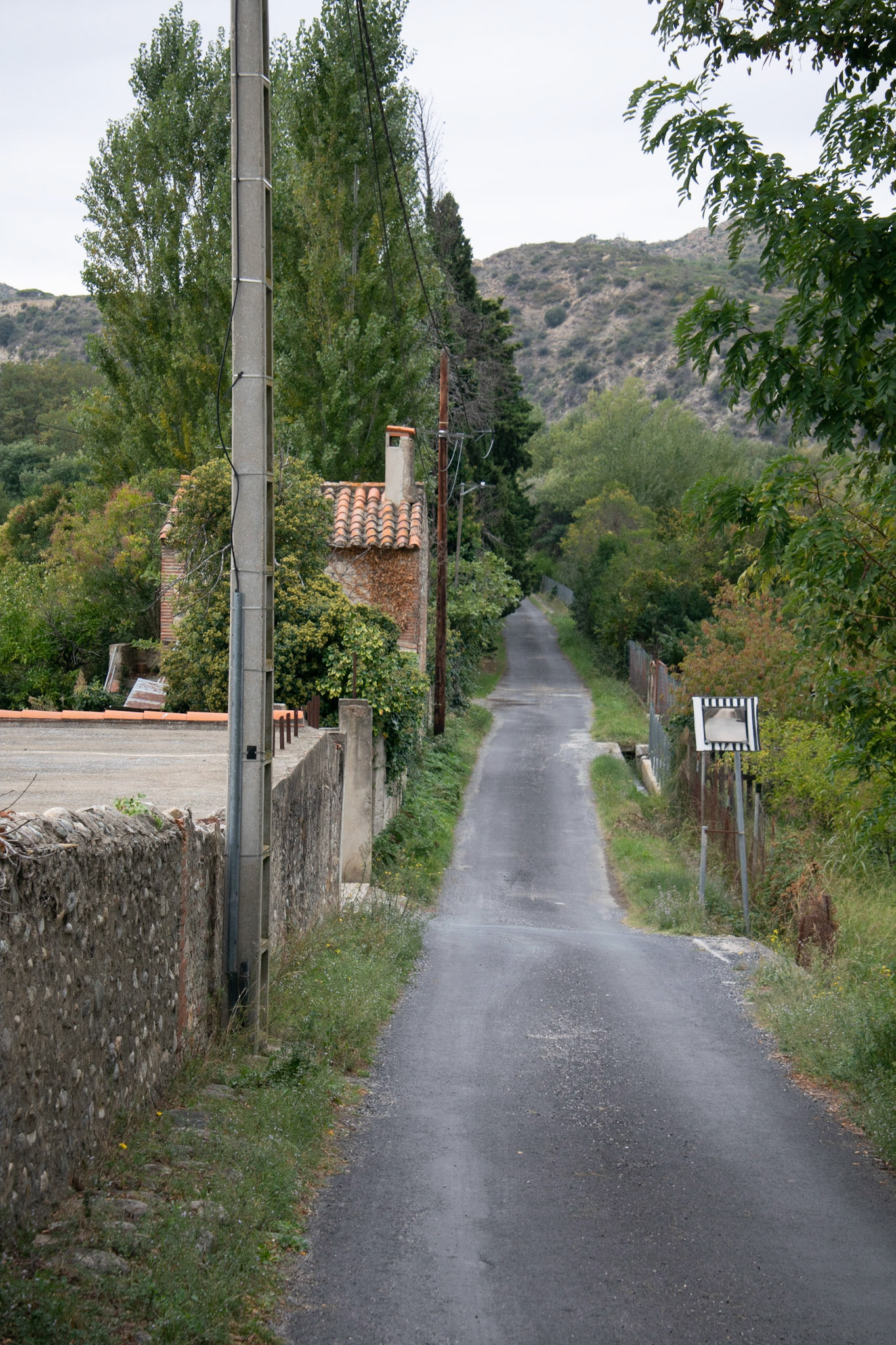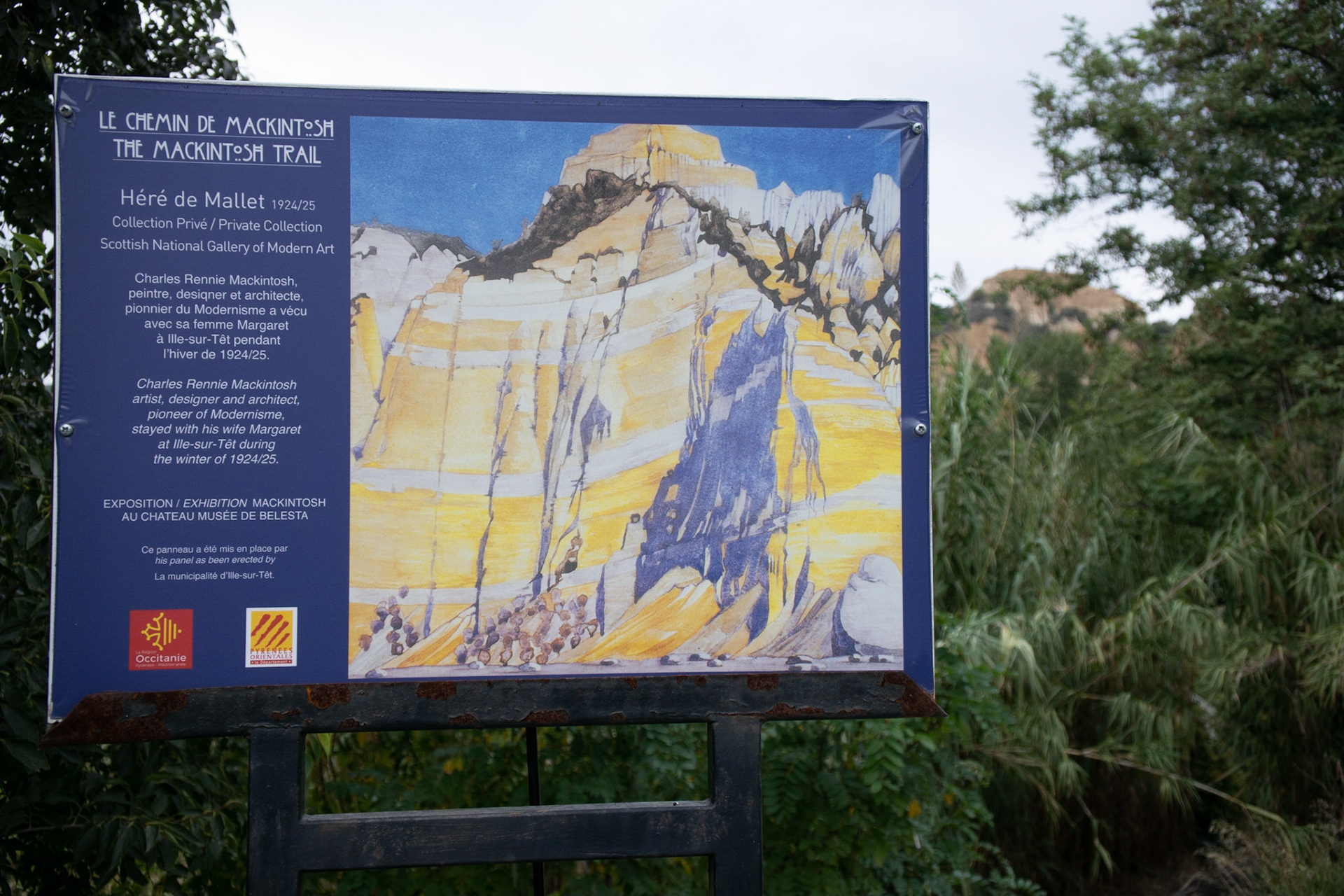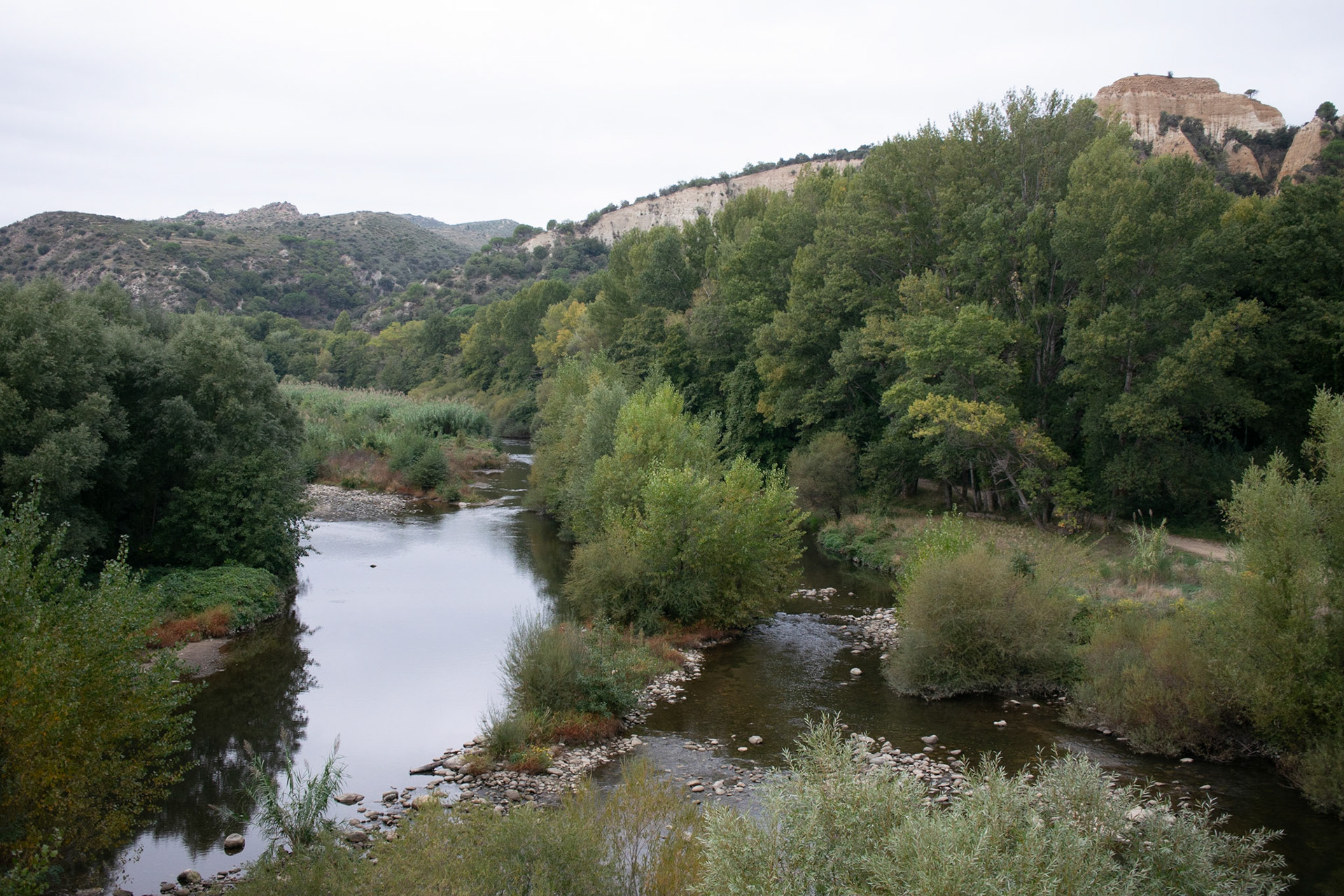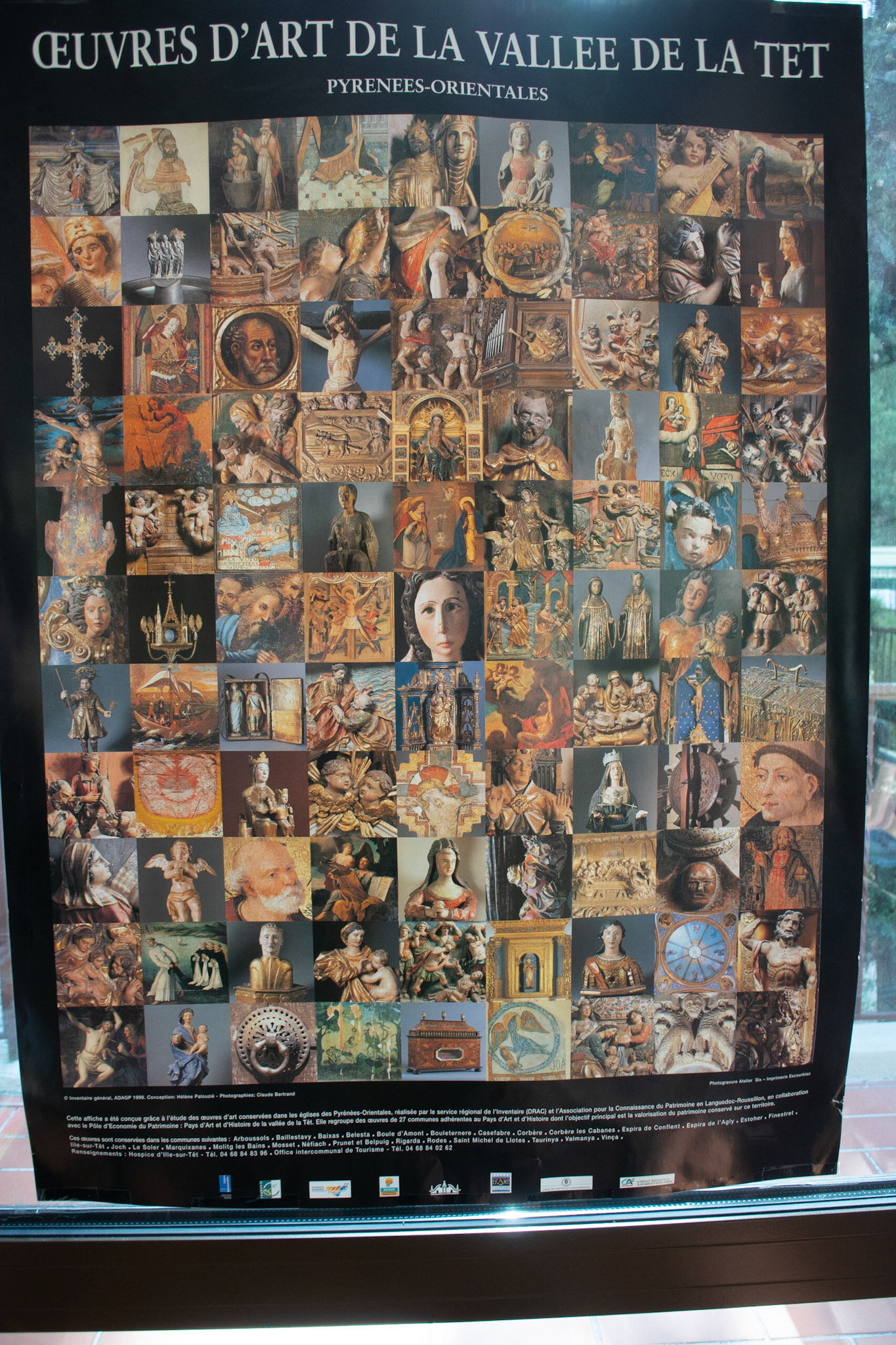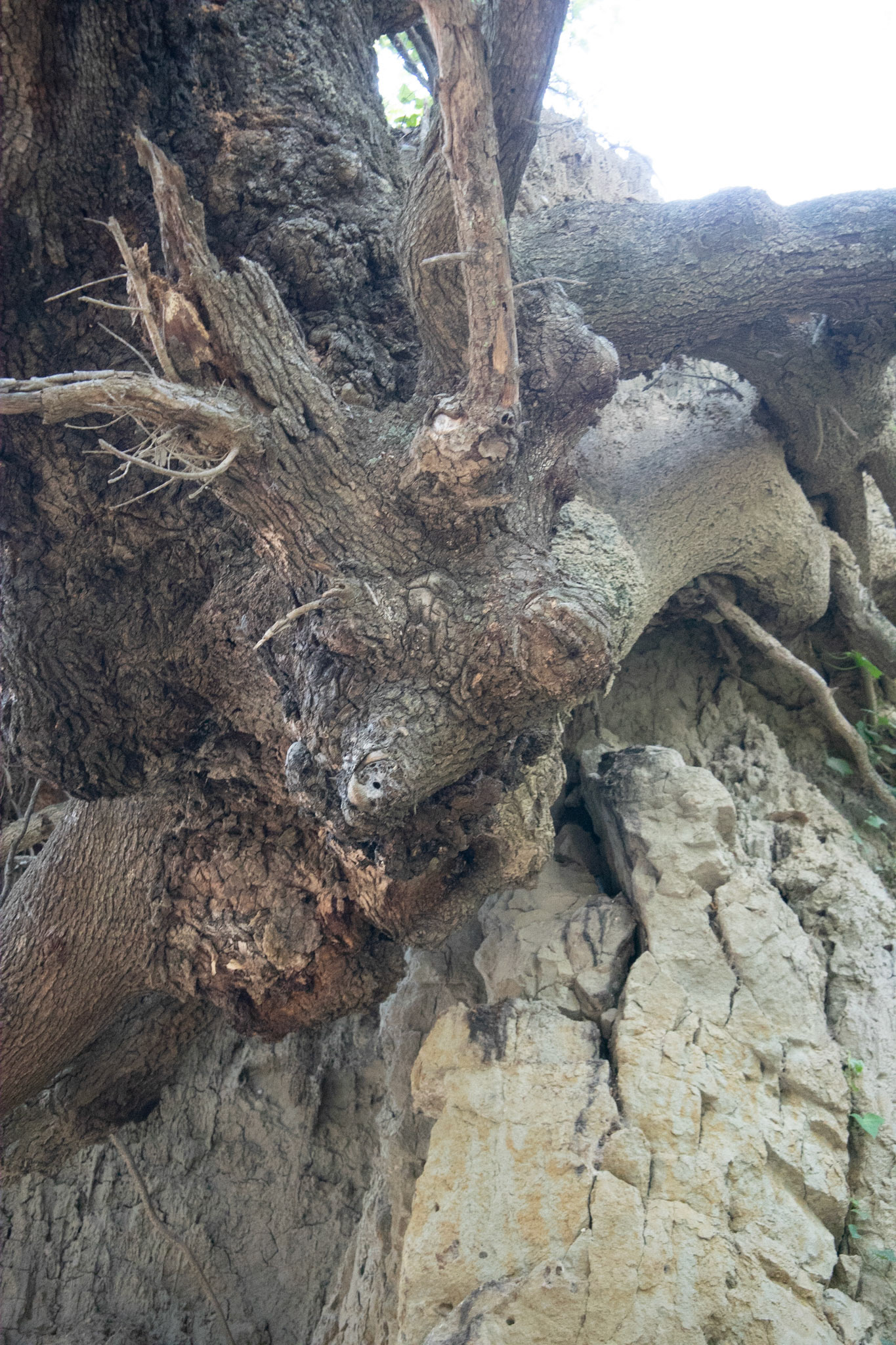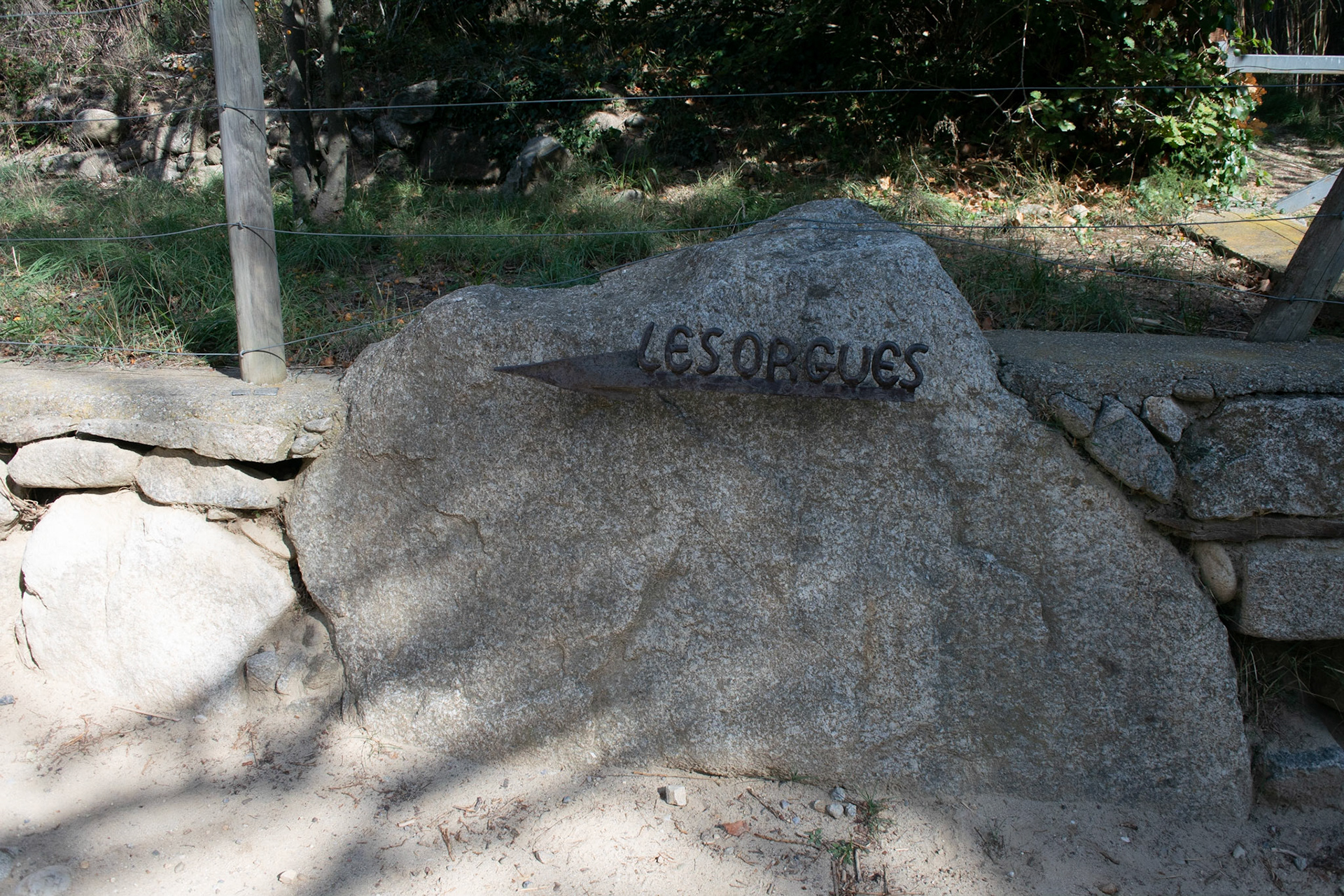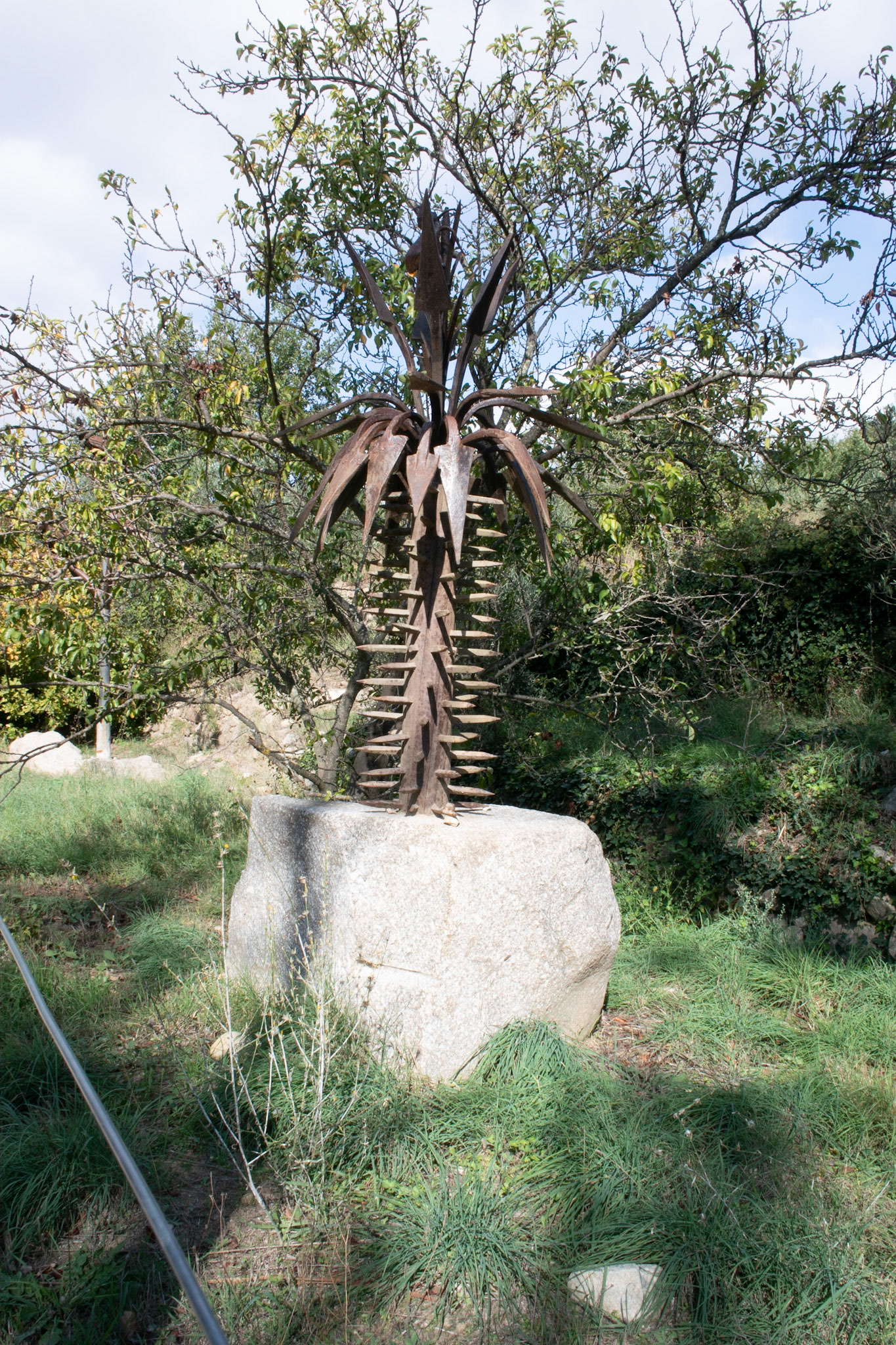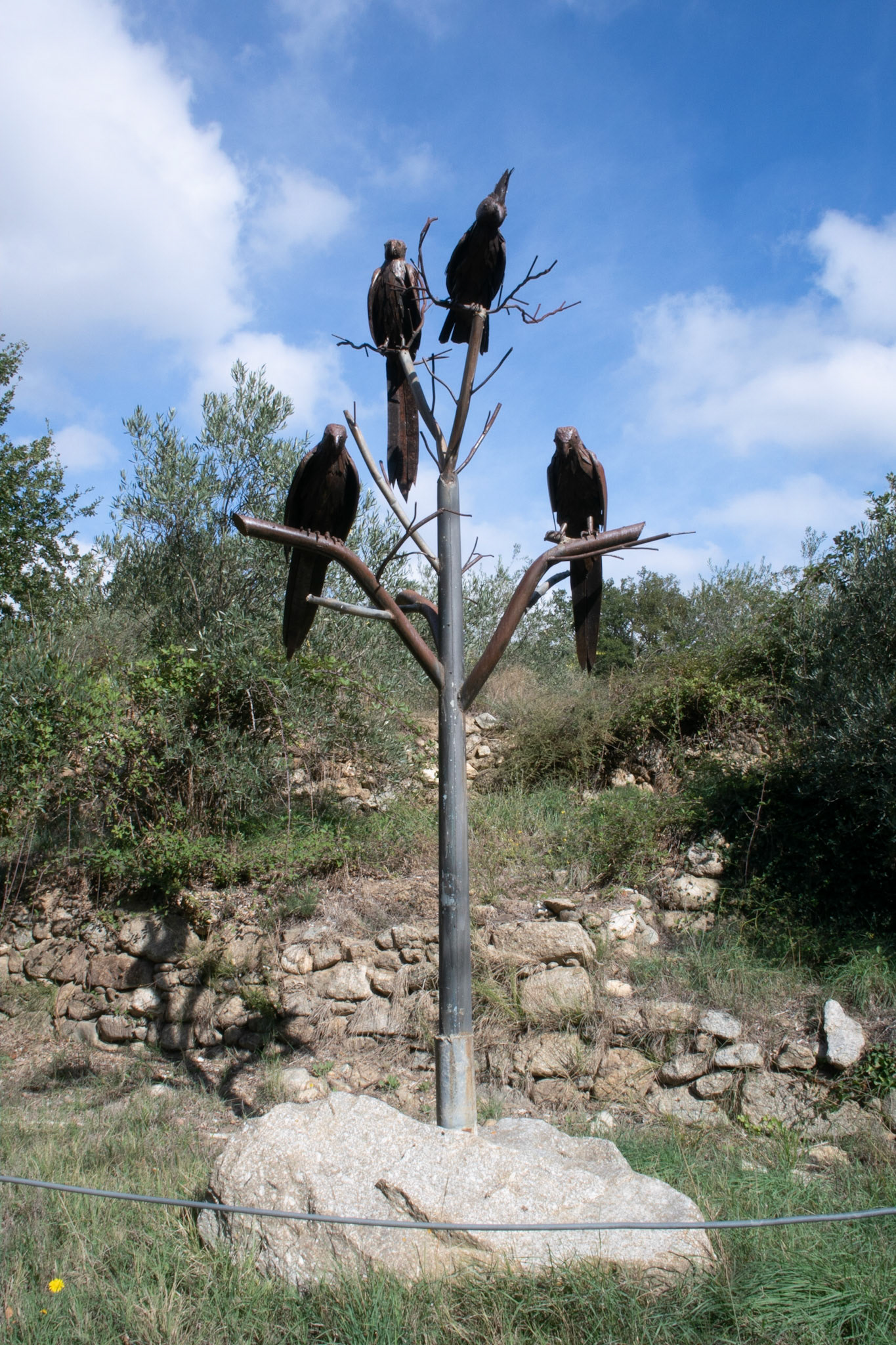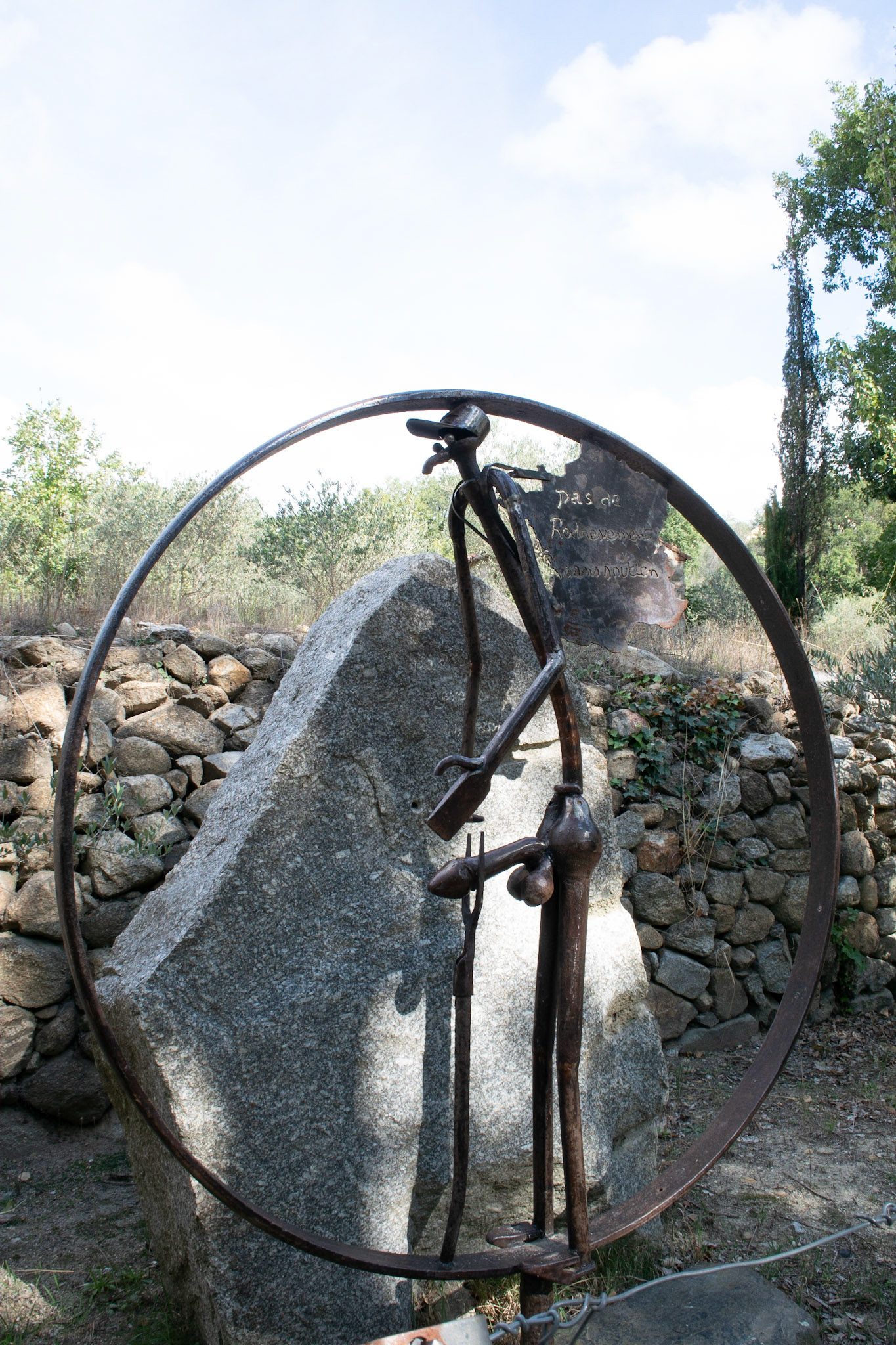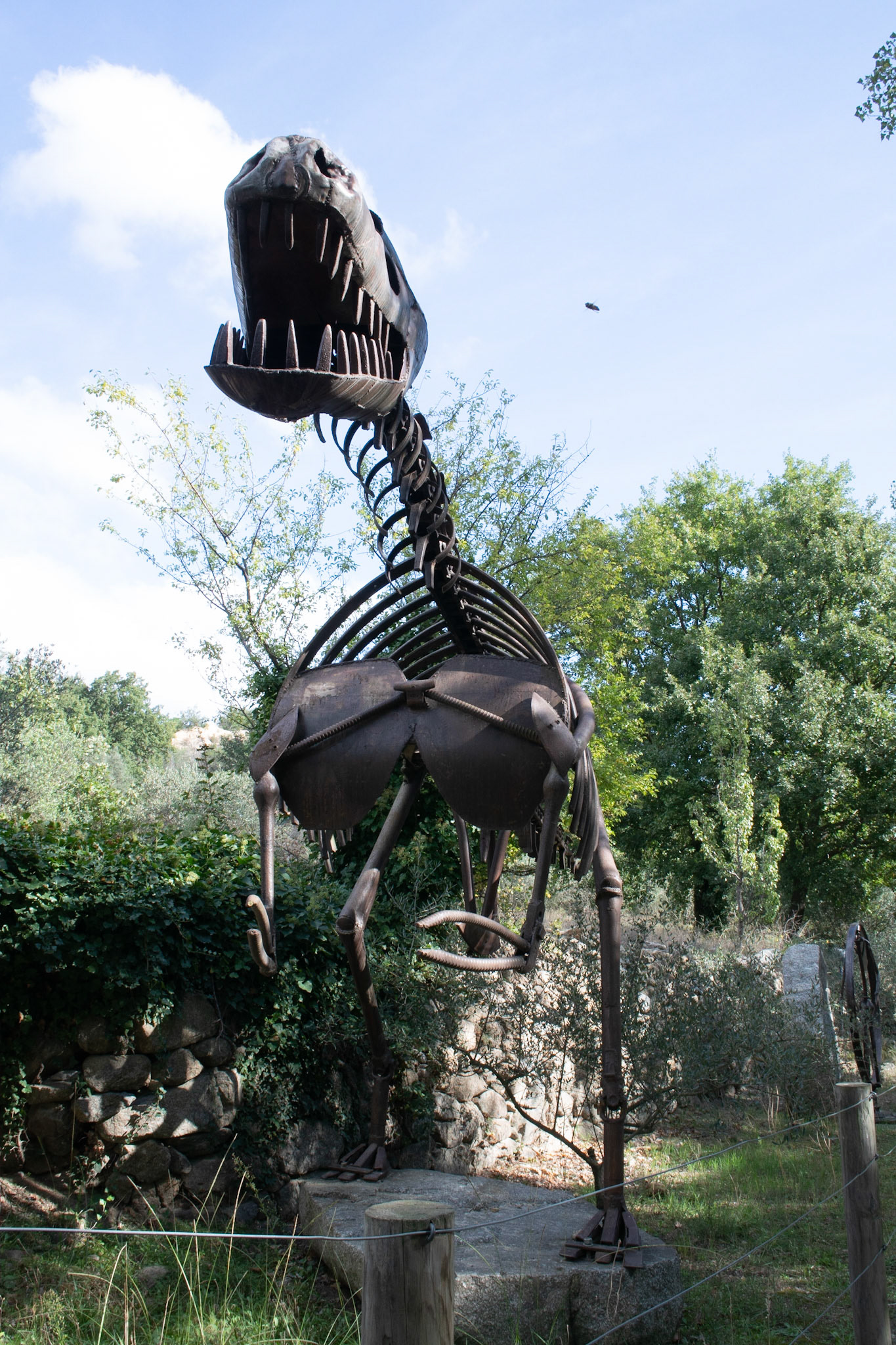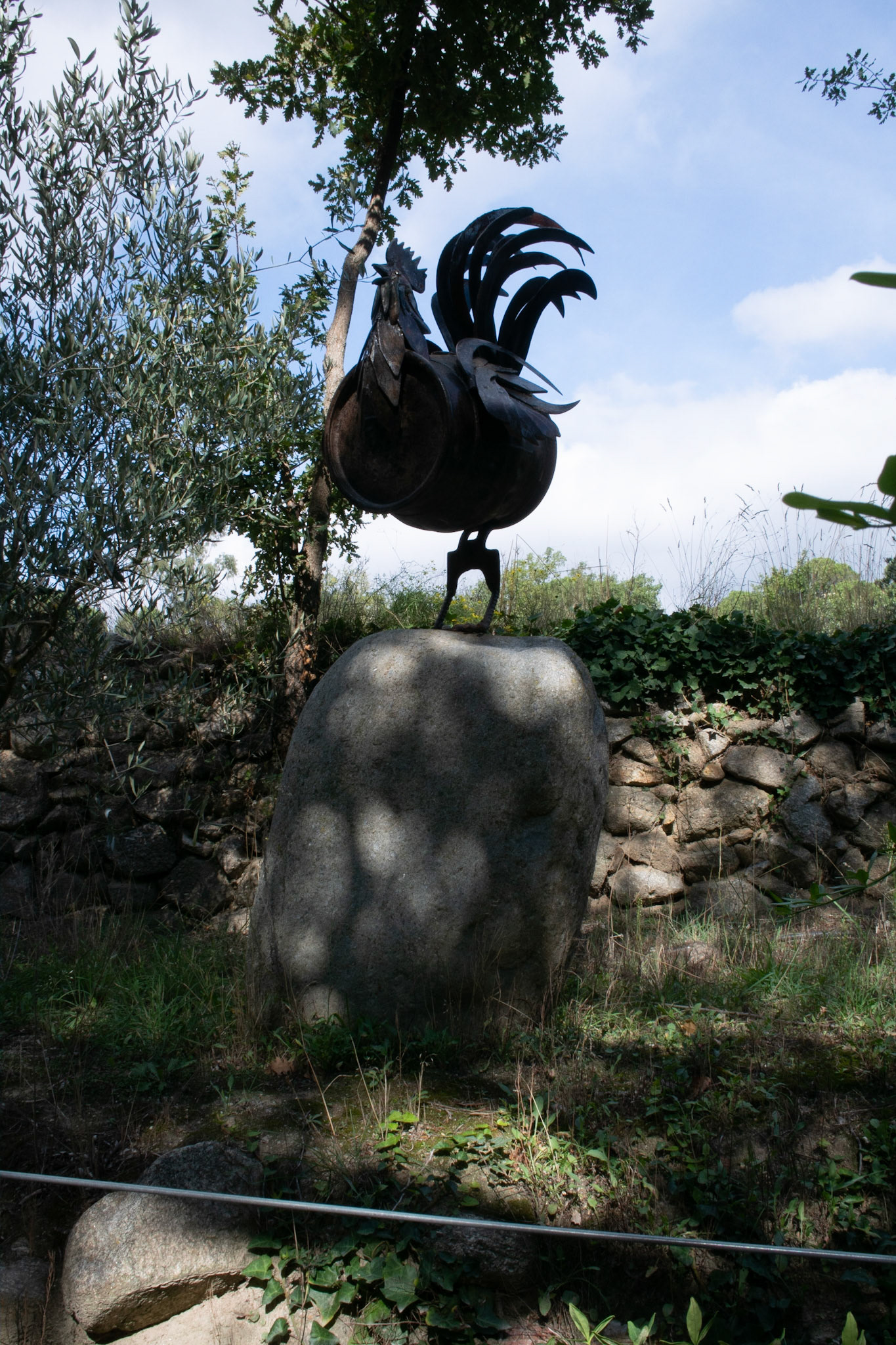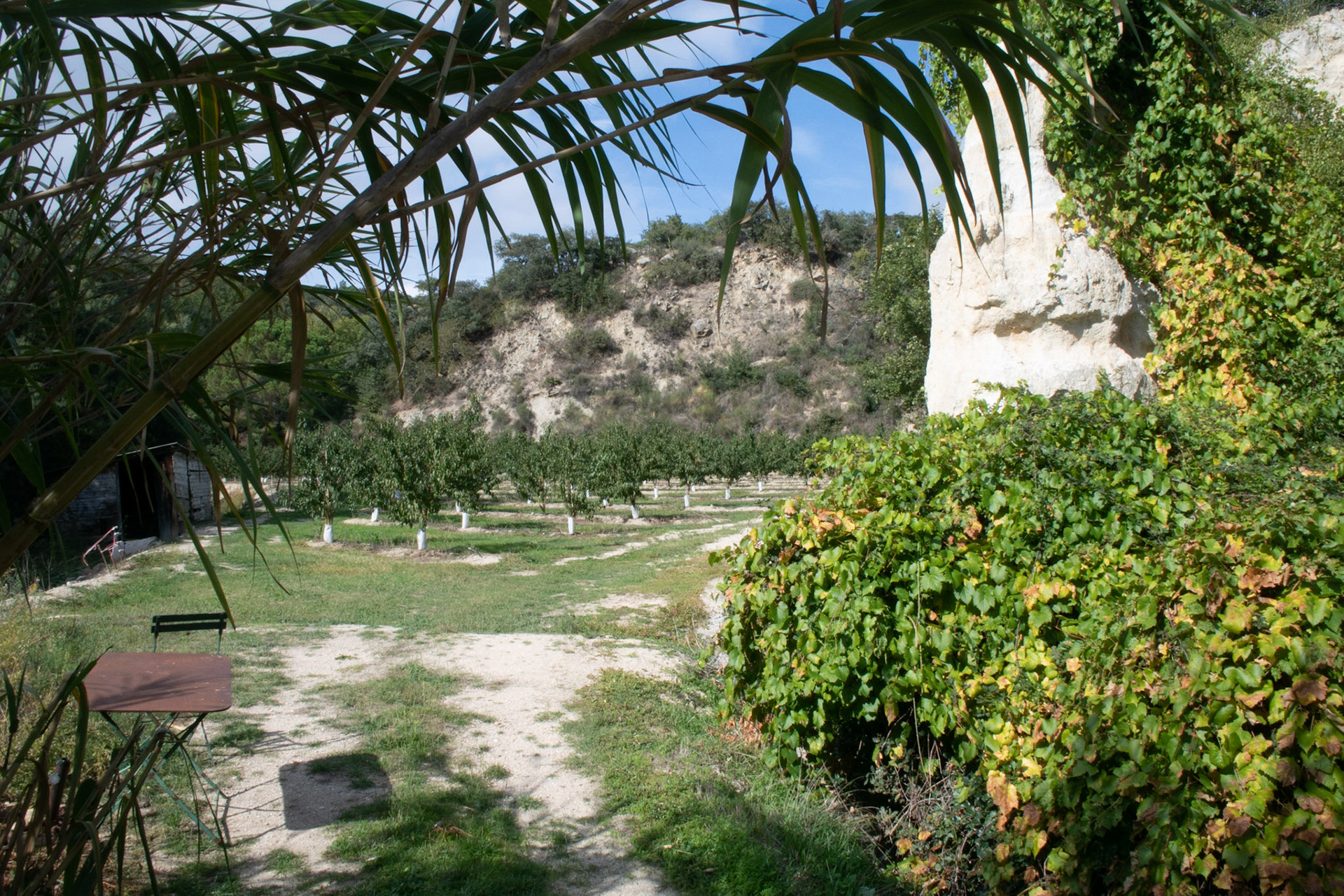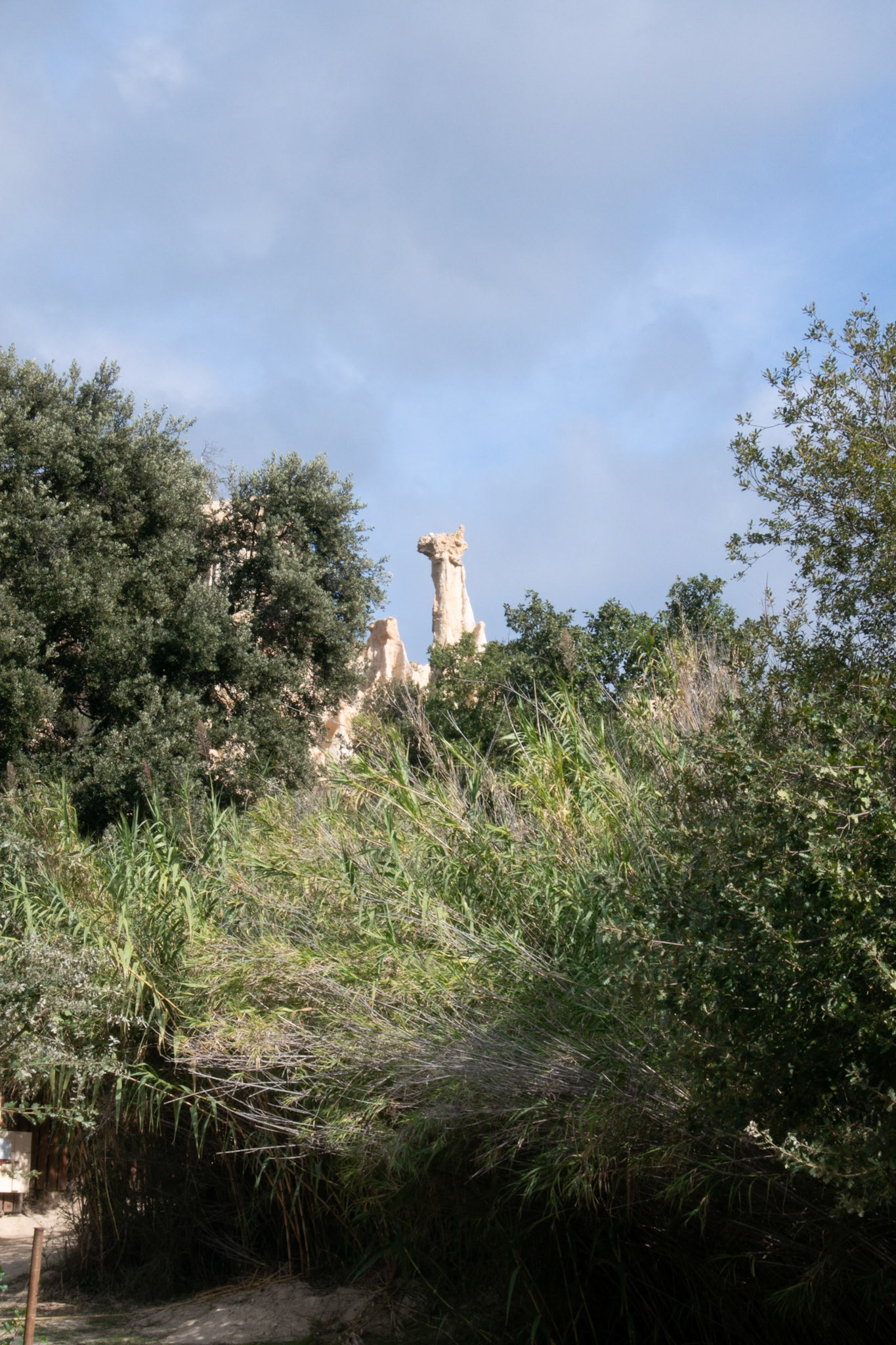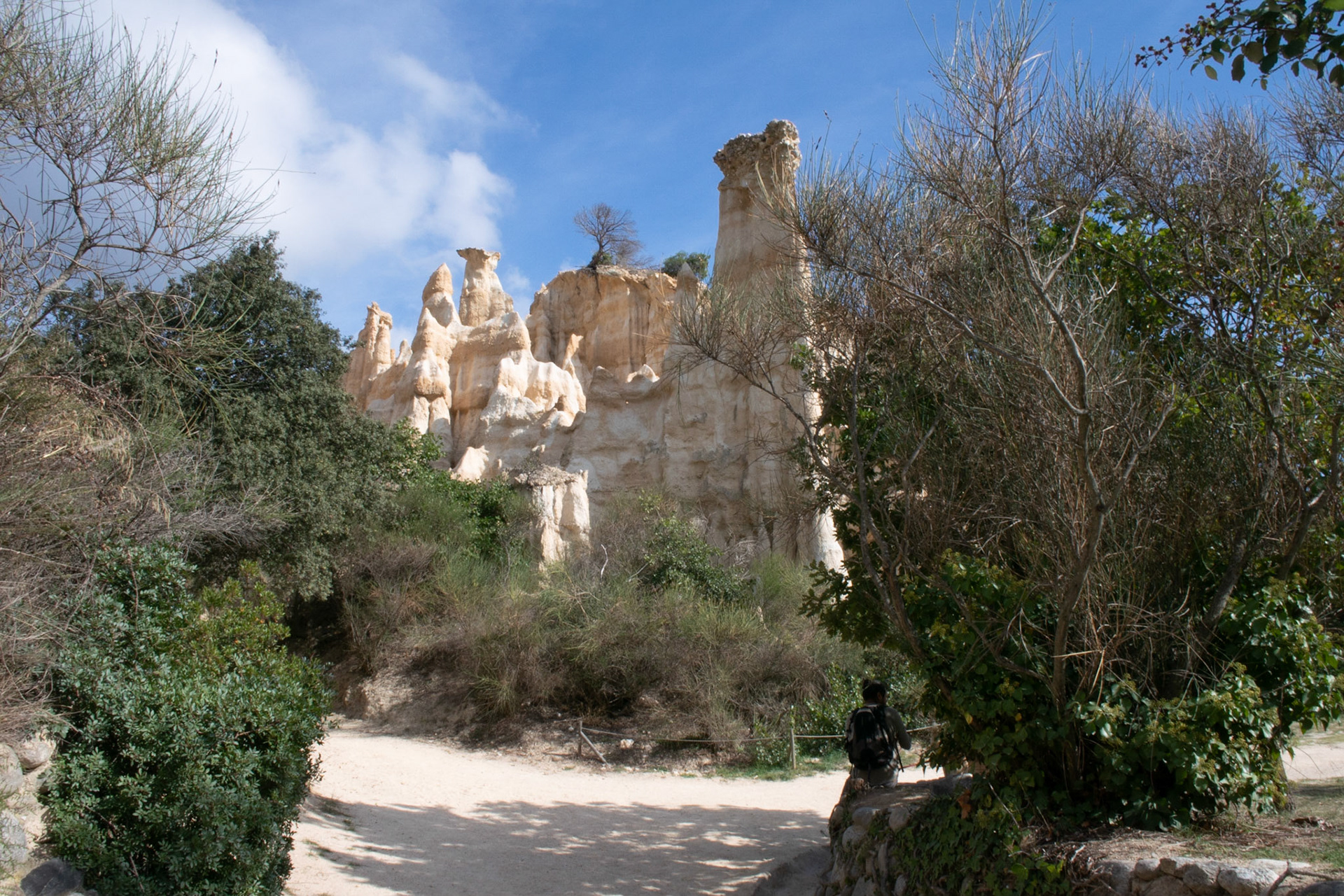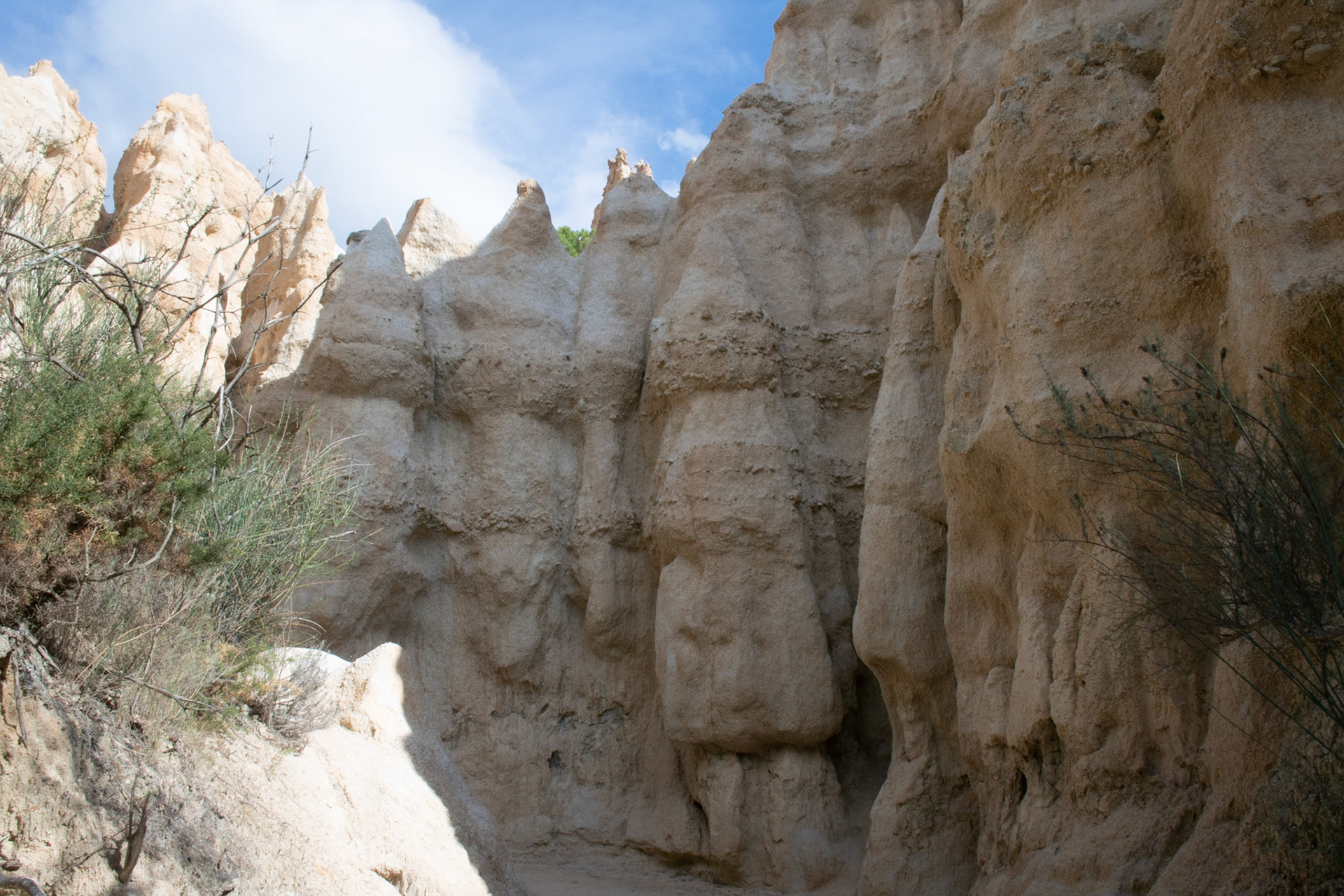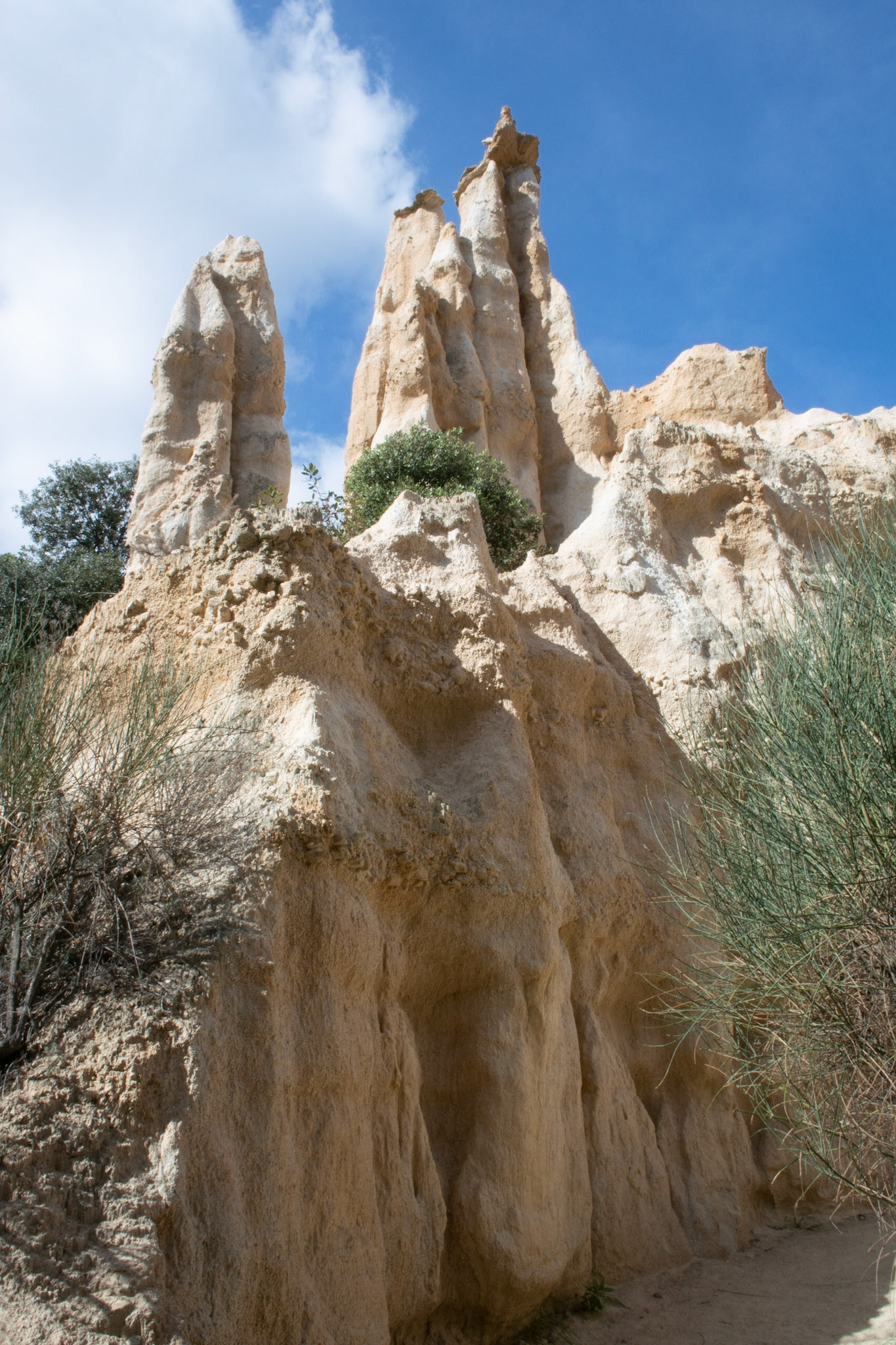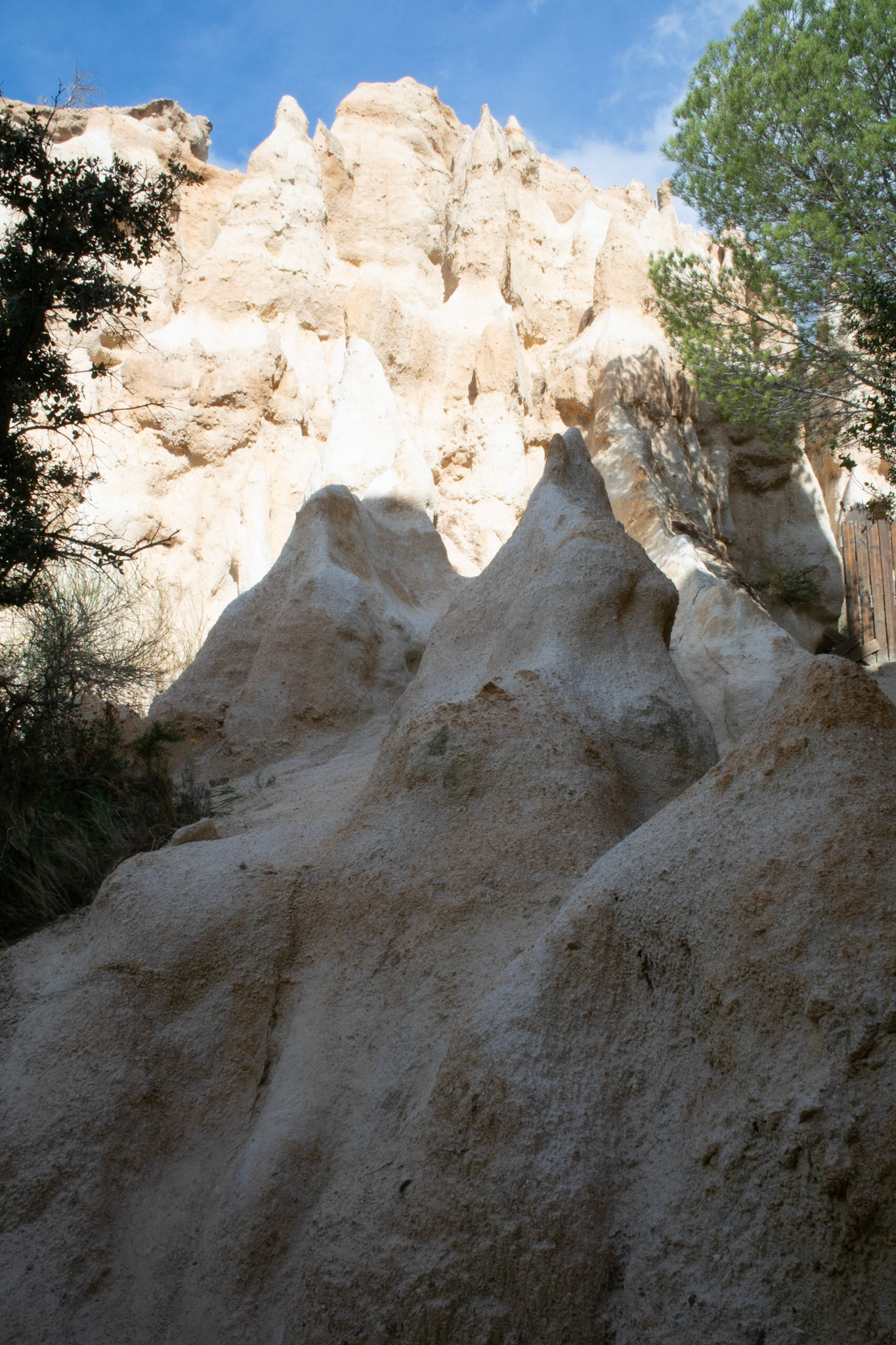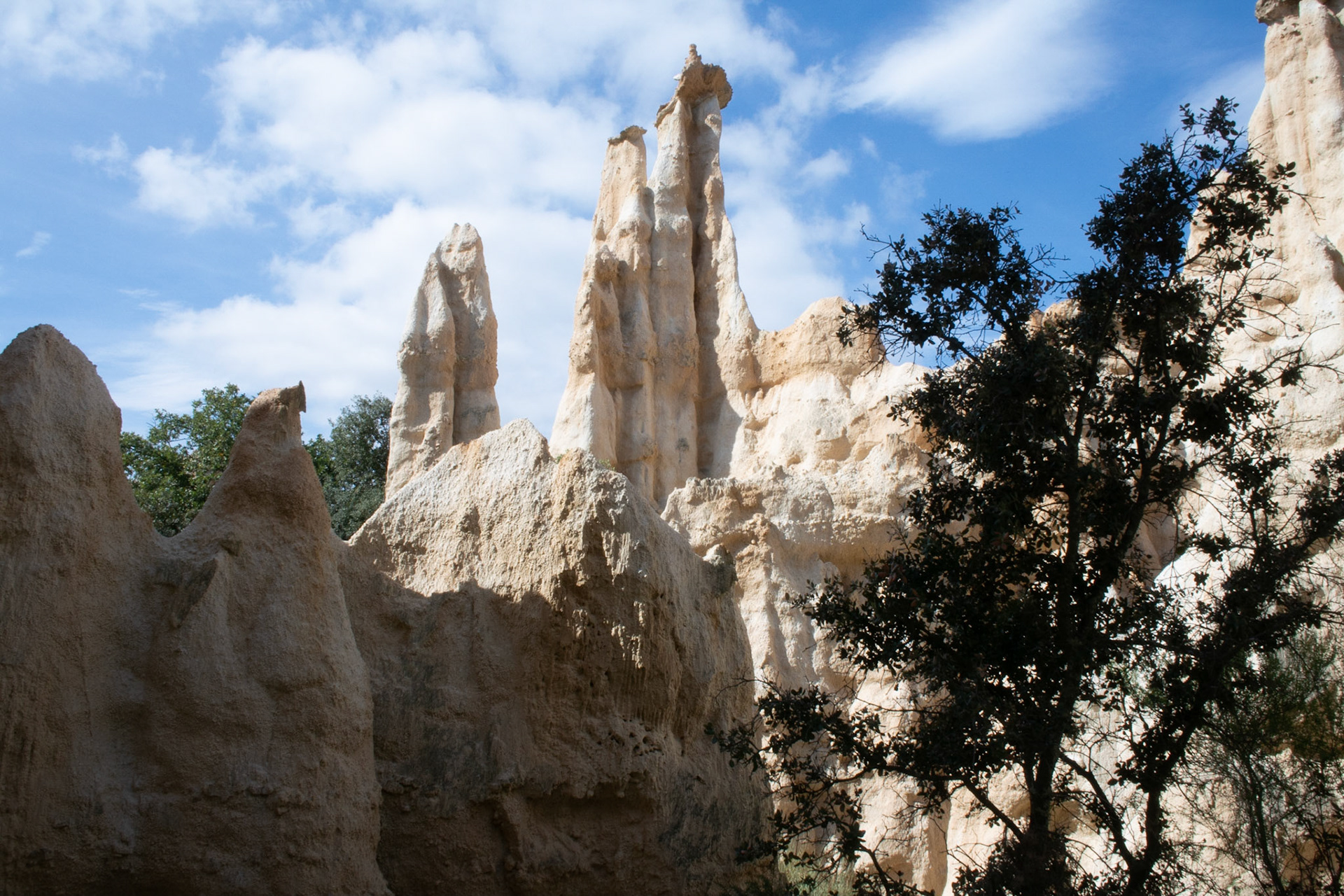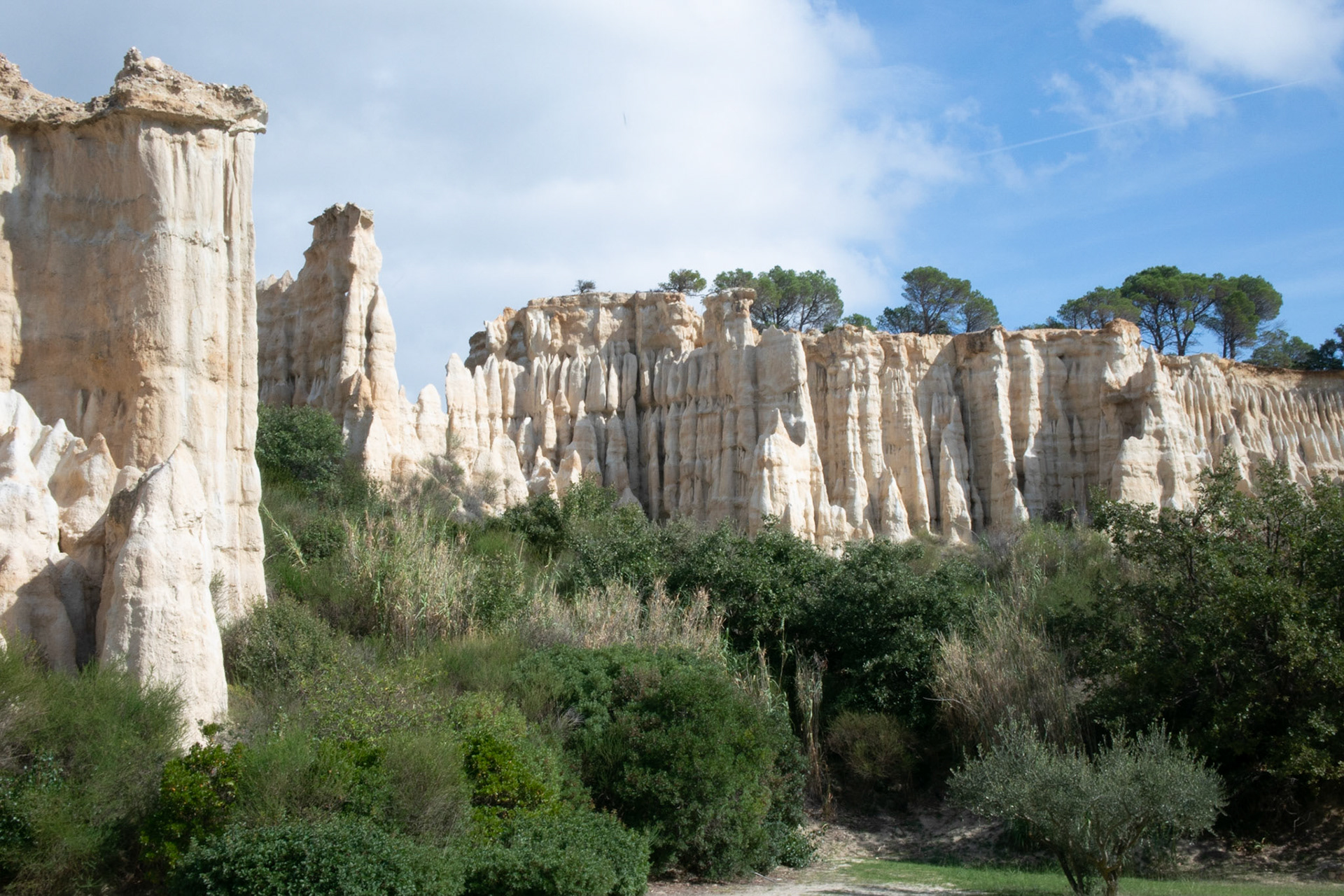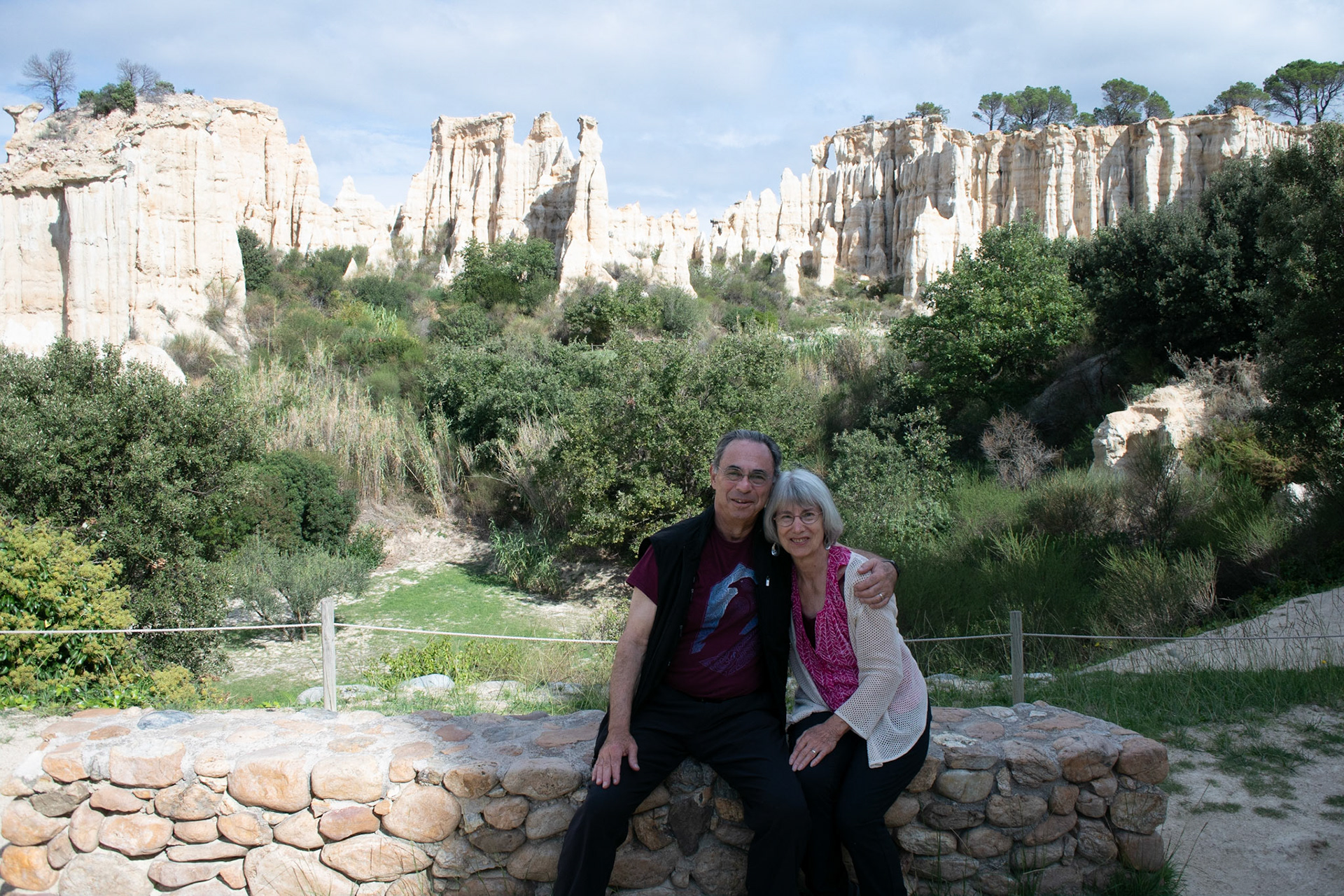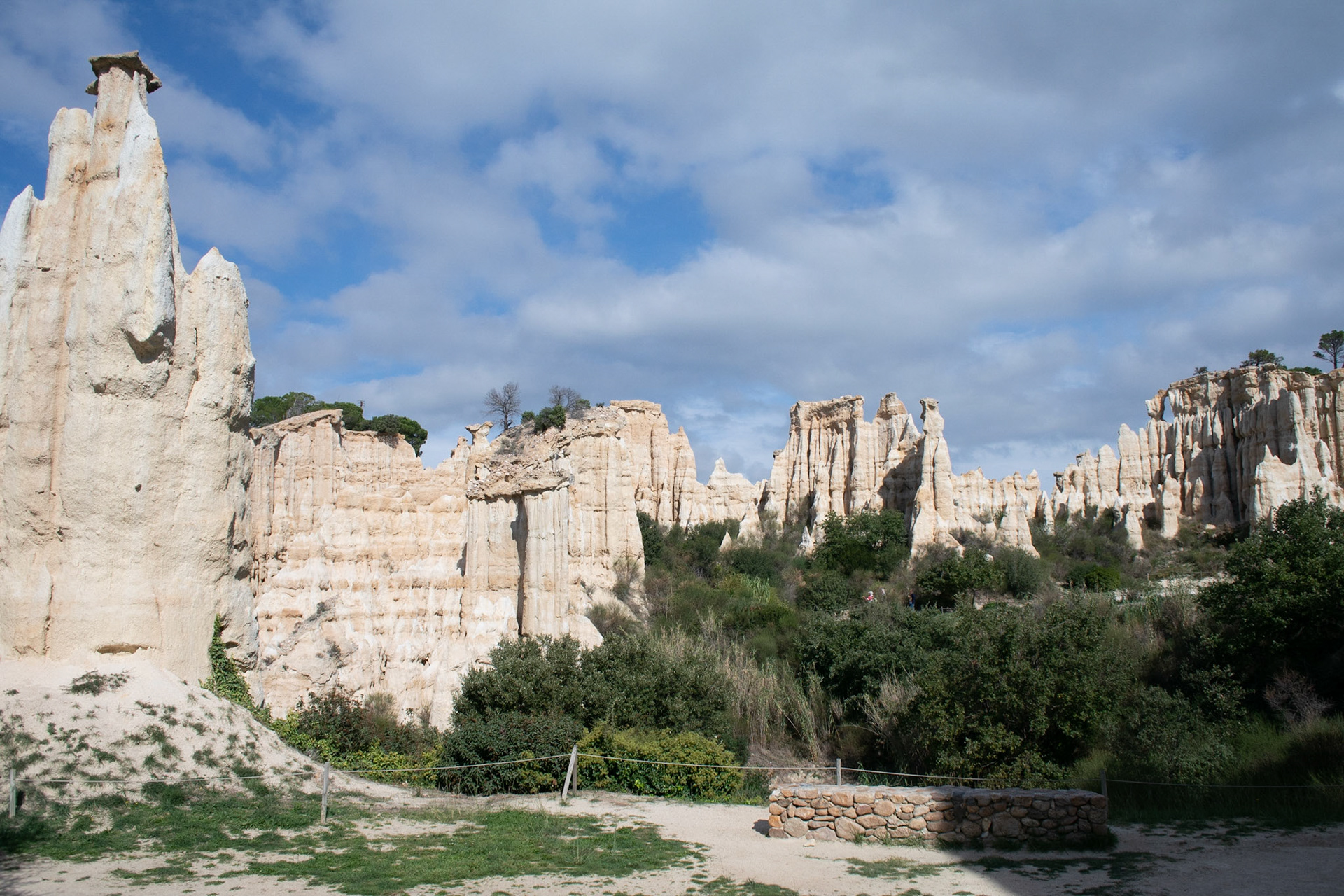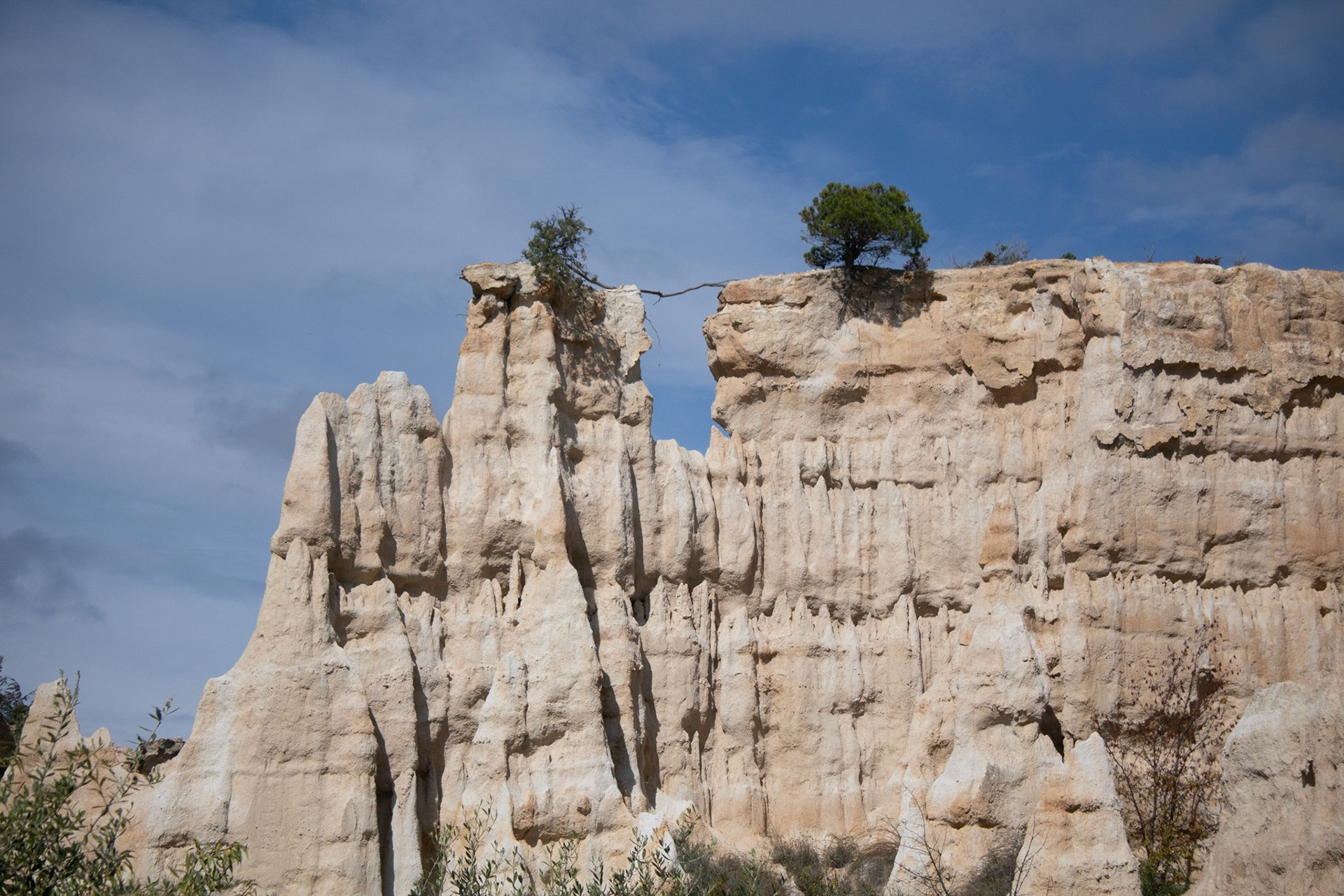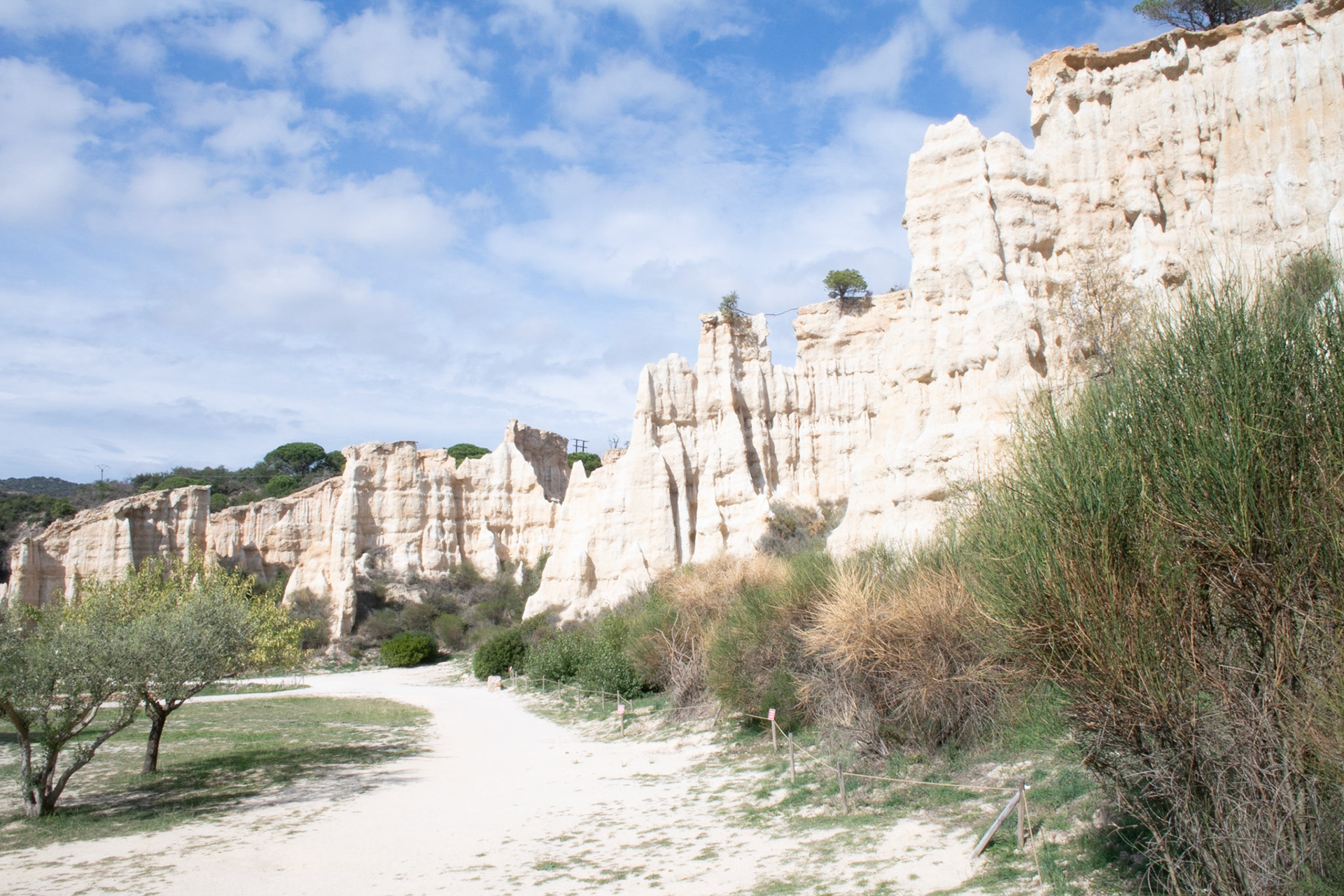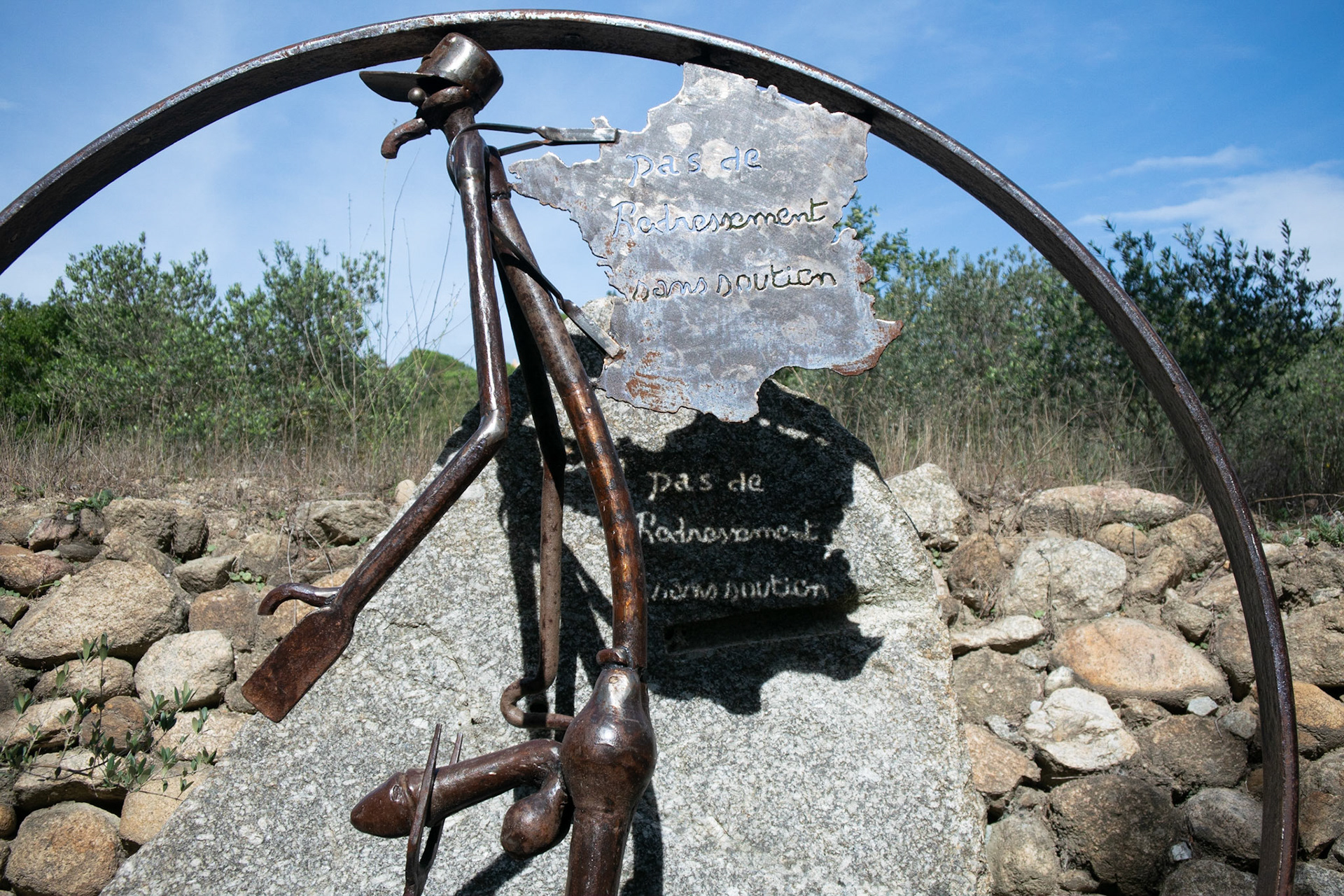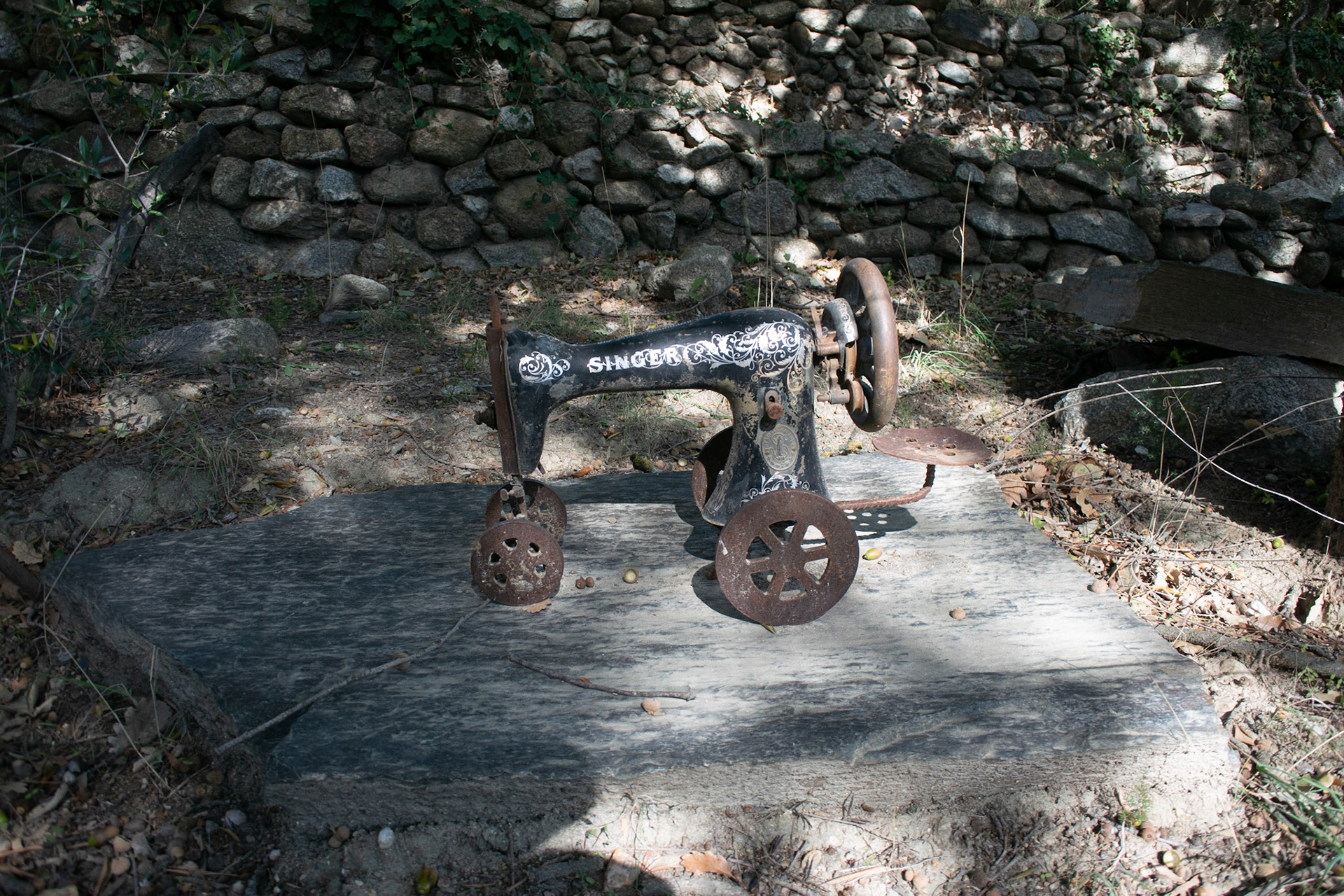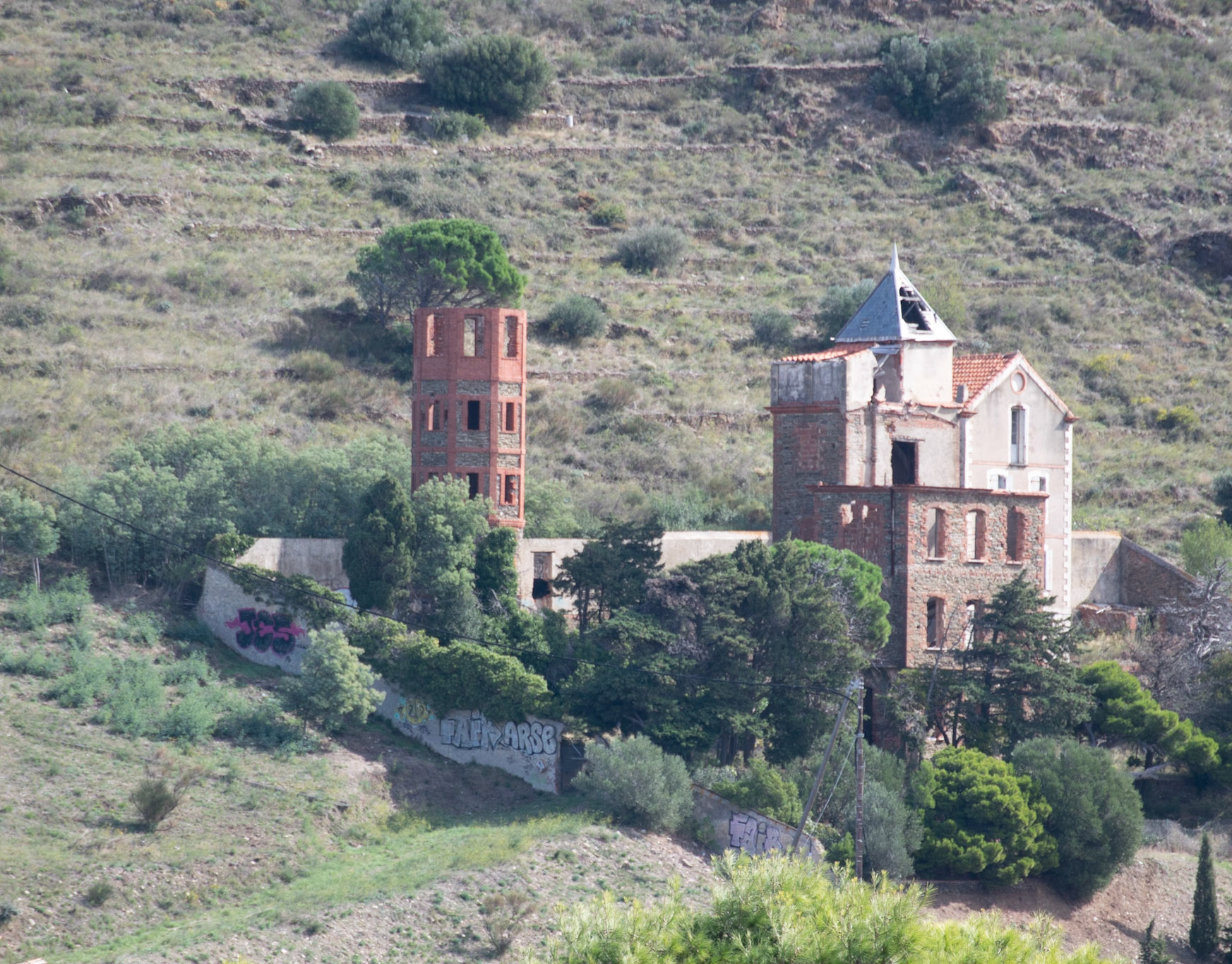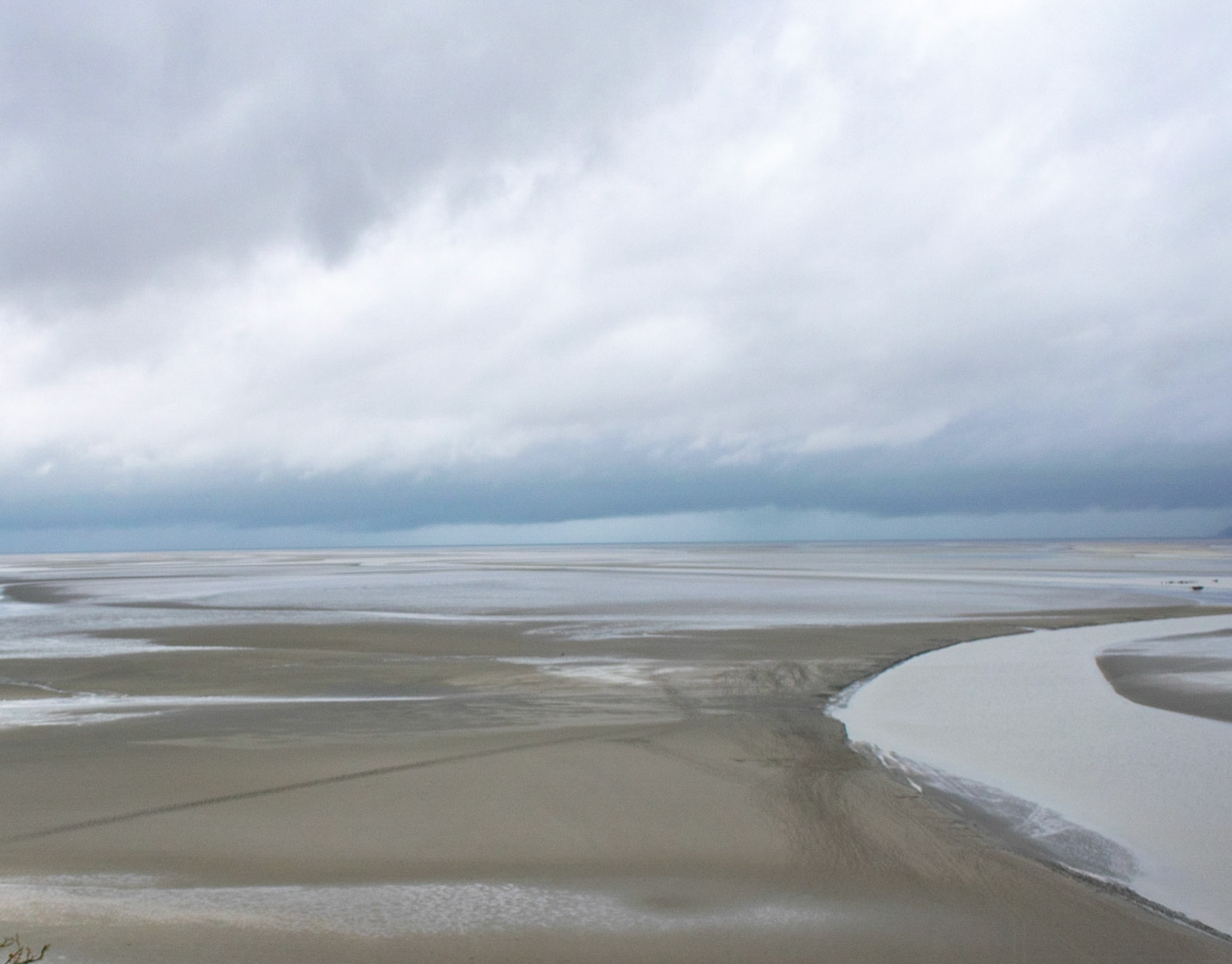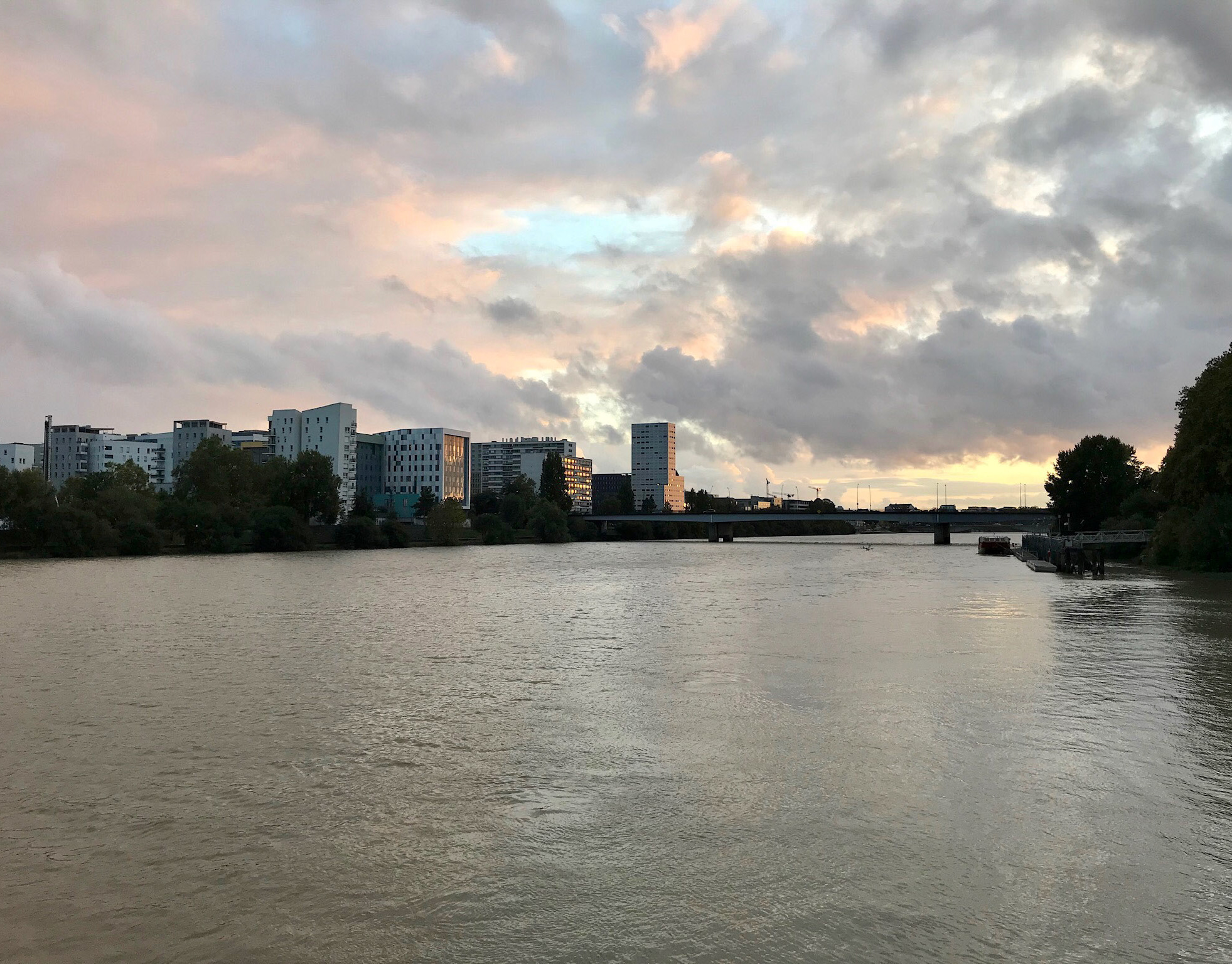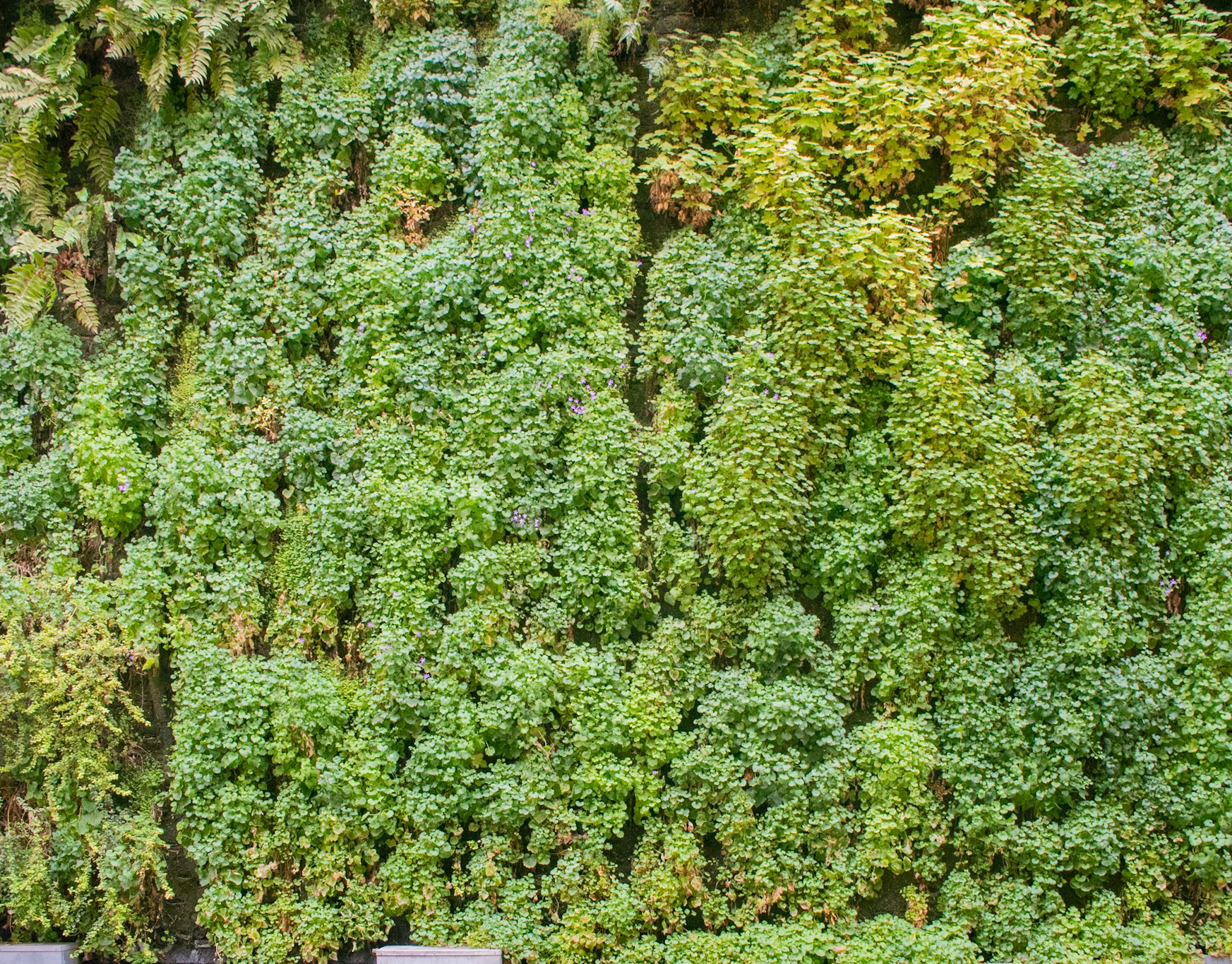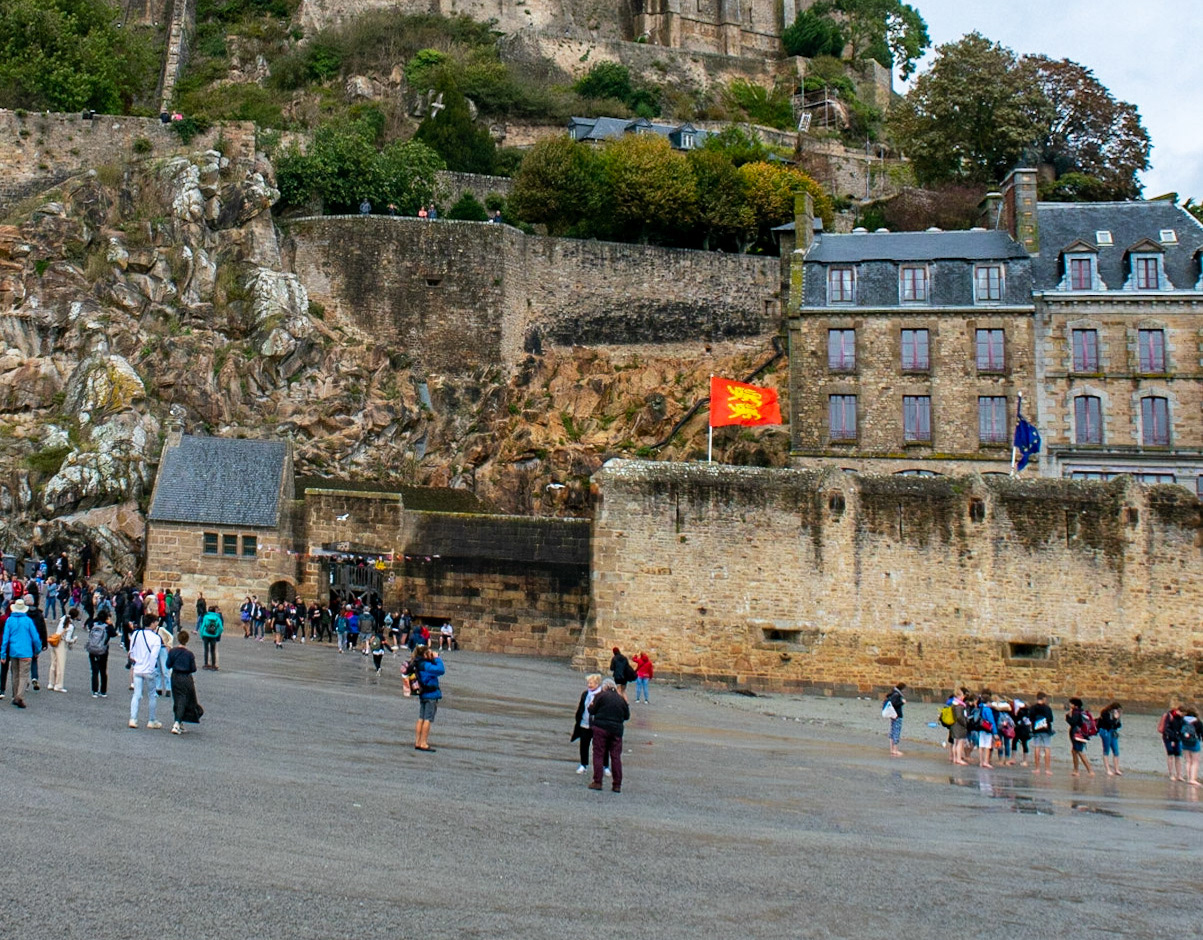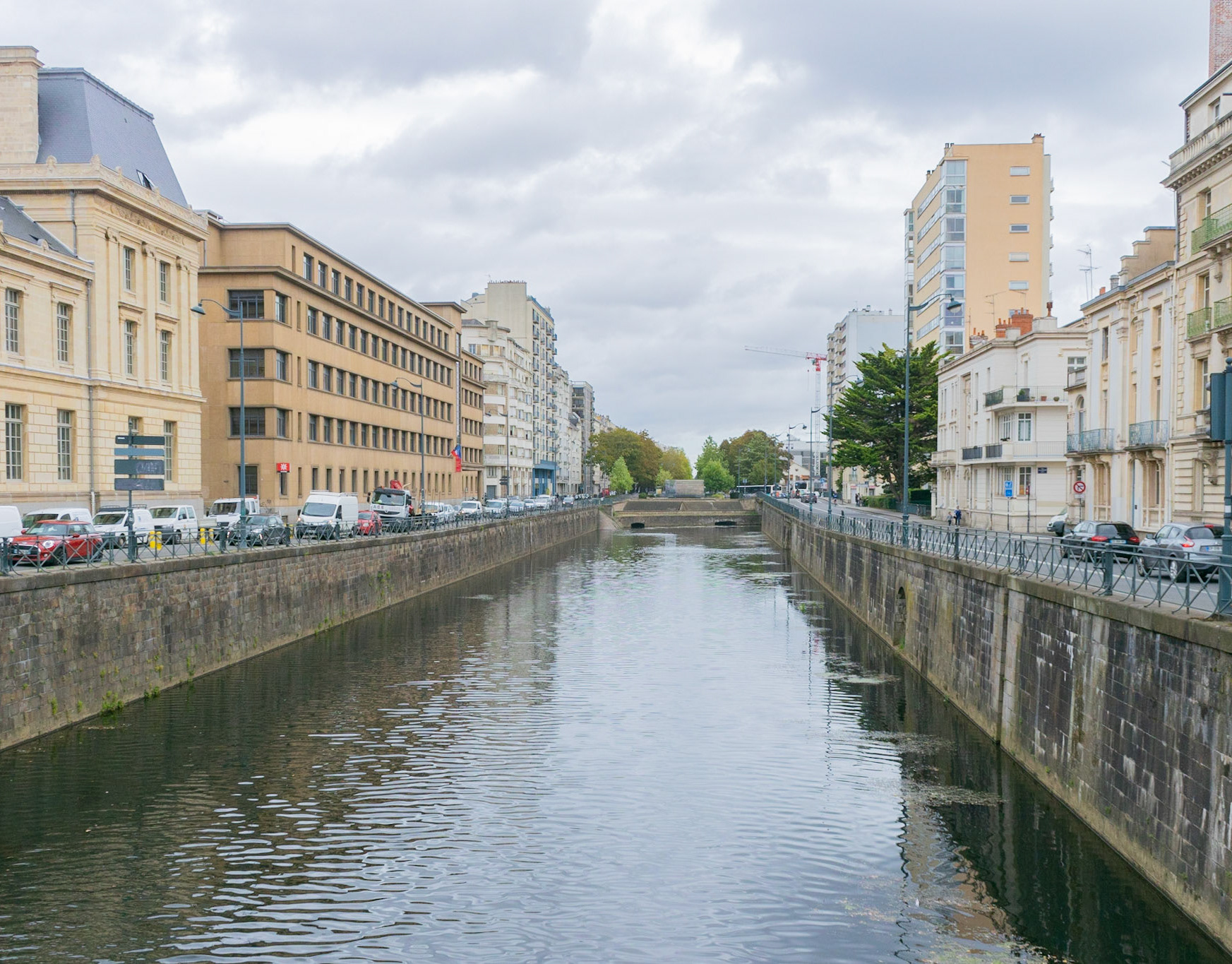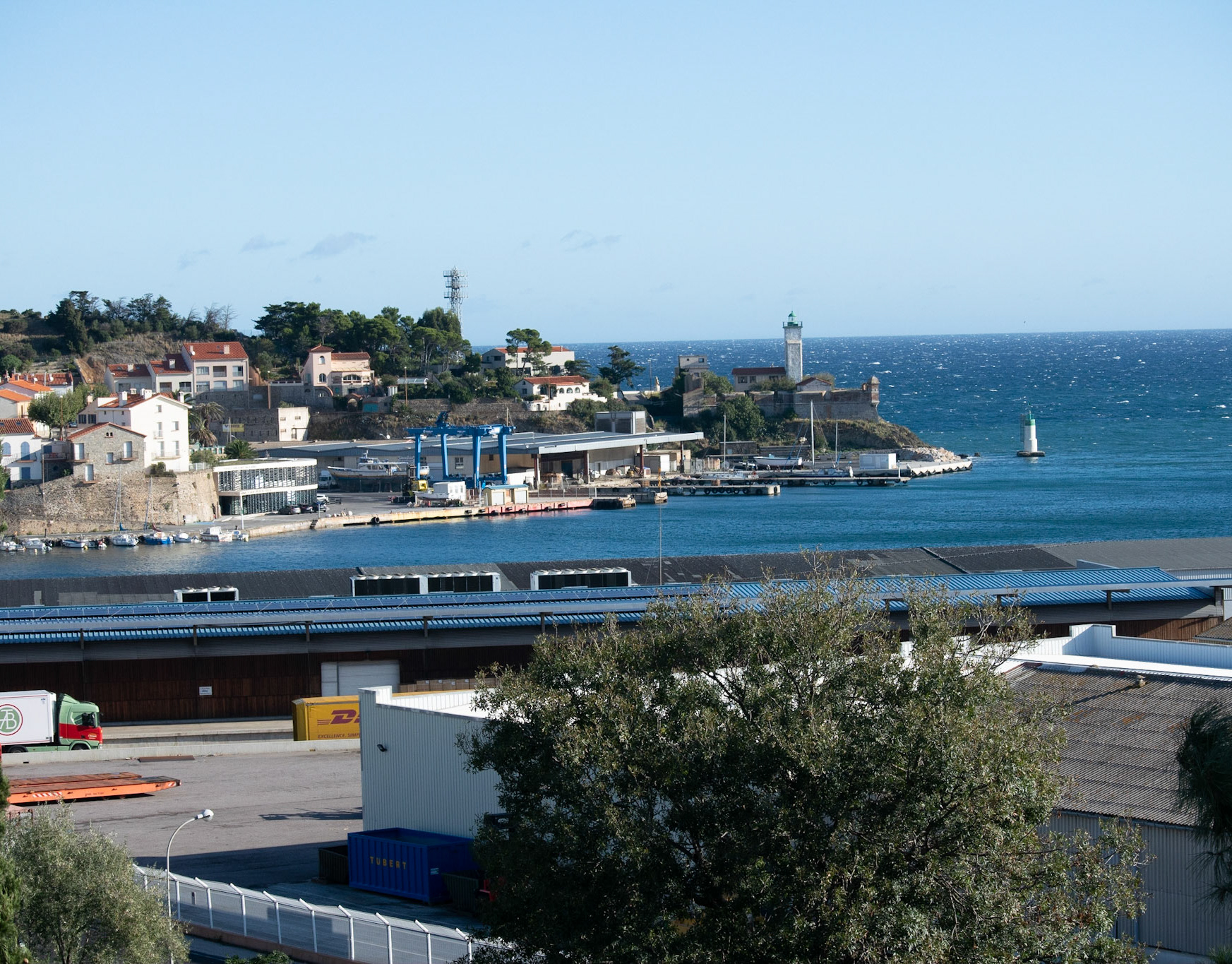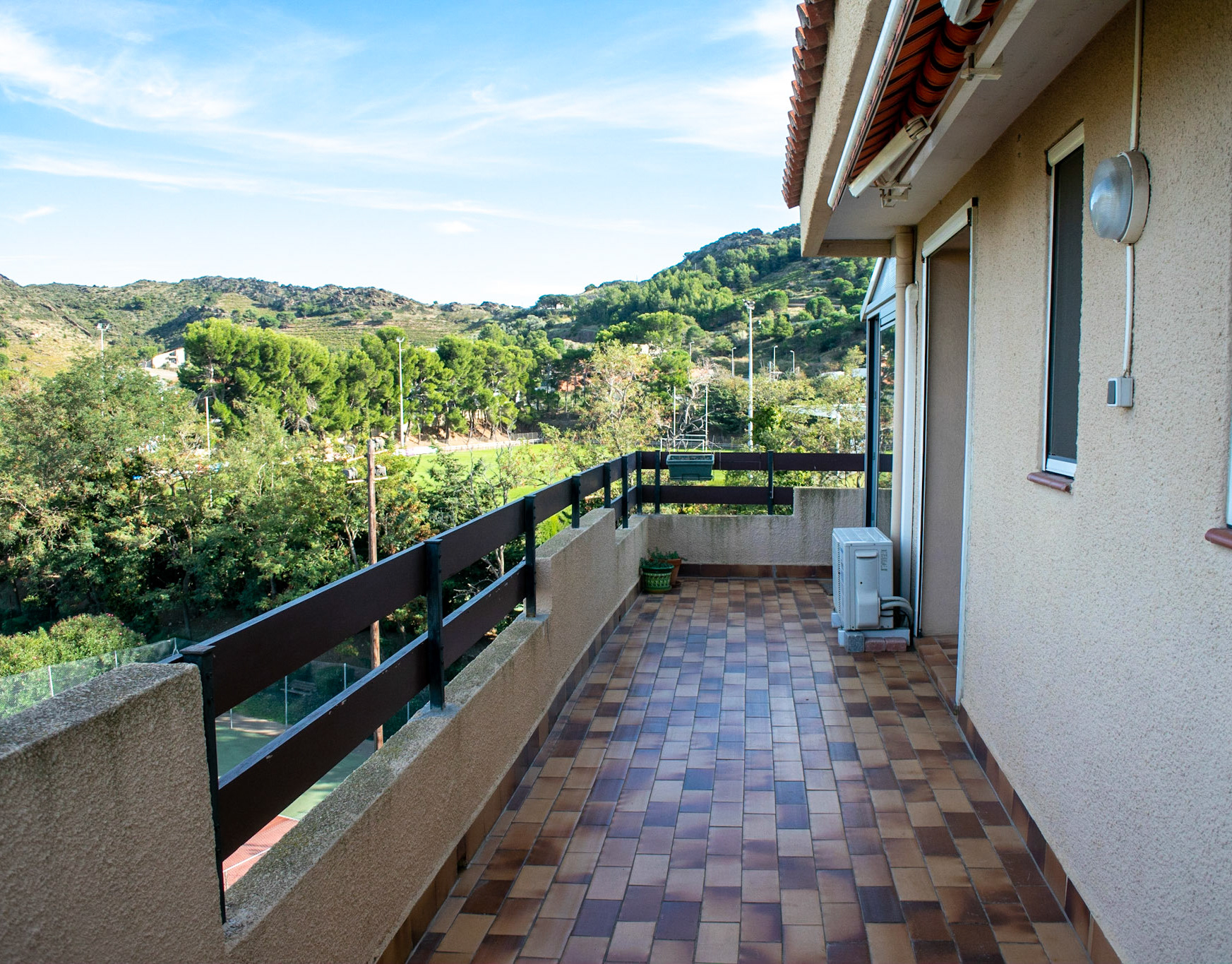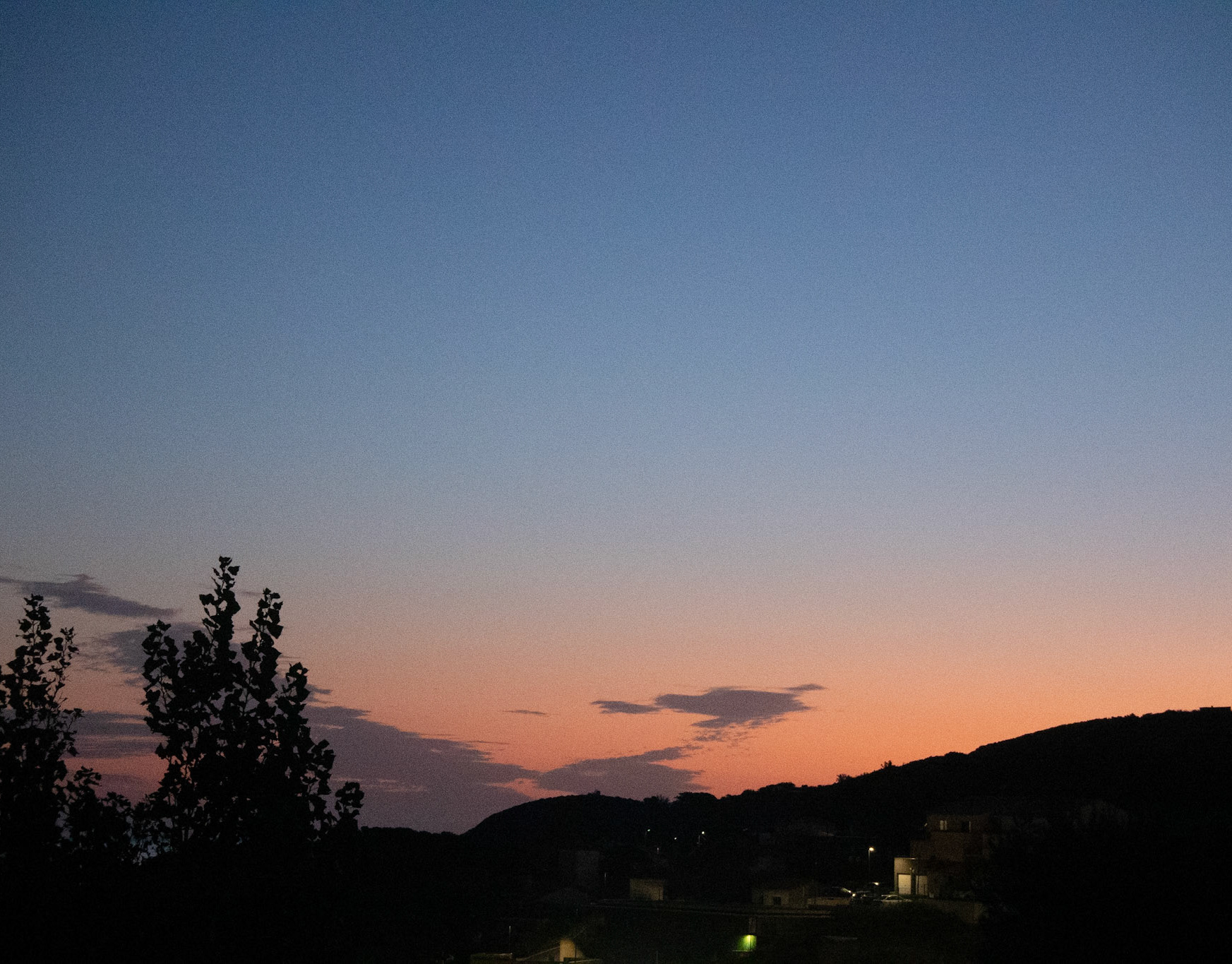Linny had been researching interesting villages within easy reach by train or bus. She happily proffered Ille-sur-Têt as a day trip. On the 17th, we got the 1st bus from Port-Vendres to Perpignan. There we transferred to another local bus (1 euro) and headed up the valley of the Rive Têt. She thought the village might be interesting, but the nearby geologic park filled with Hoodoos offered a hike and a visual treat.
The town was not yet fully awake when we got off our bus. It was cool, and the day looked like it could go in any weather direction. We found a cafe just opening and had our petit dejeuner while we looked at some local maps we'd just gotten from the tourism office. The woman there suggested a walk in the village and said that the hoodoos were great, but about a 40 minute walk away.
We decided to first explore this old walled city, which turned out to be quite easy, since the old city is relatively small and we were right in the middle of it. We slipped down a back street that became a narrow cartway and found (or lost) ourselves in a warren of old lanes with houses on the brink of collapse, though still in use. In their midst rose an enormous cathedral built from cobble—round river rock and mortar—that has long ago shed its smooth skin coat of mortar and paint. It looked quite precarious.
Wandering down hill toward the river, we came to the lower wall of the town, still lived in, and the river gate to the city. Just inside of the gate was the old spring that provided the inhabitants with water still pouring into a basin. Just outside of the gate was the old, communal laundry with its several pools of running water and rock slabs for beating the dirt from cloth.
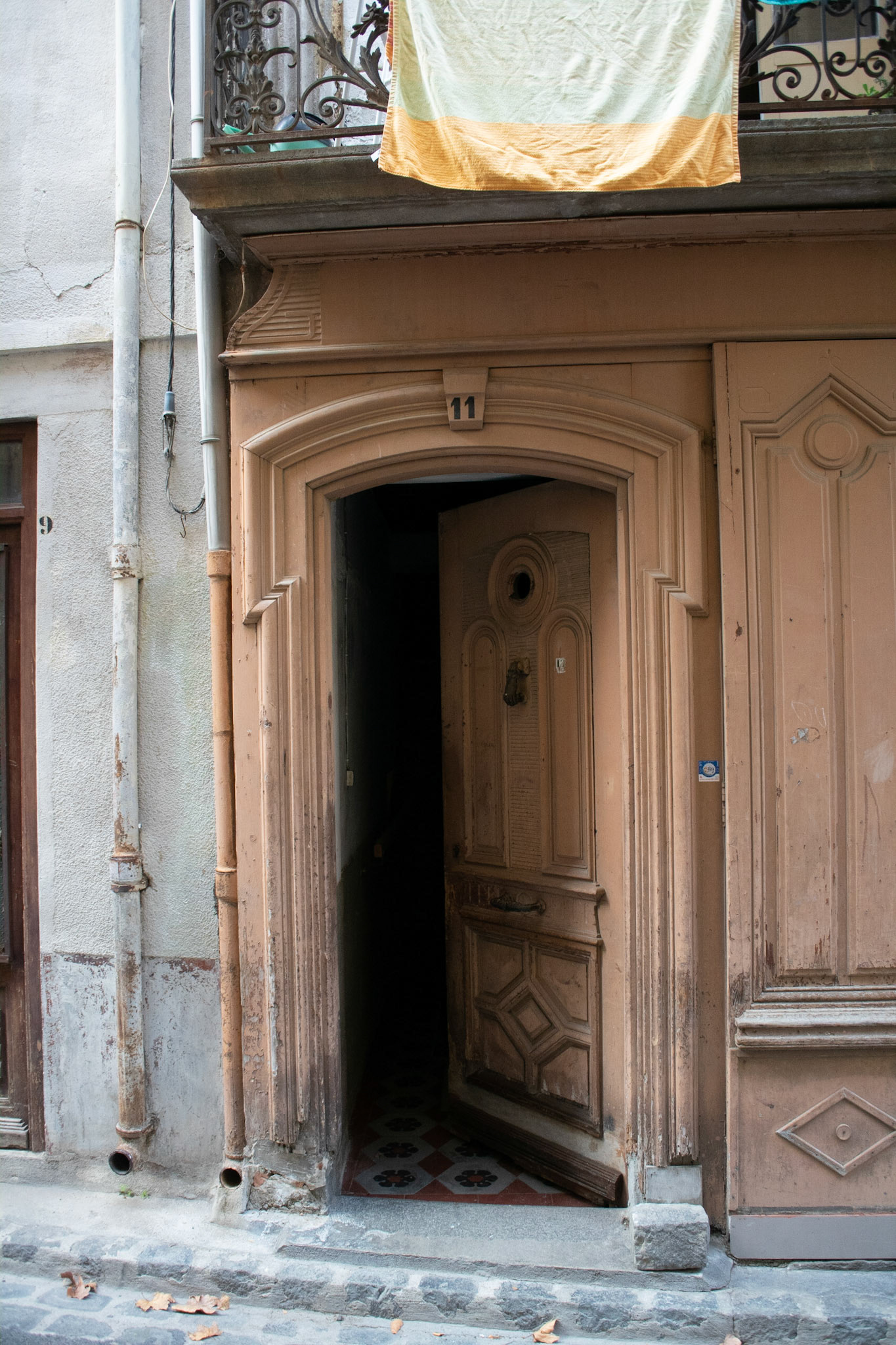
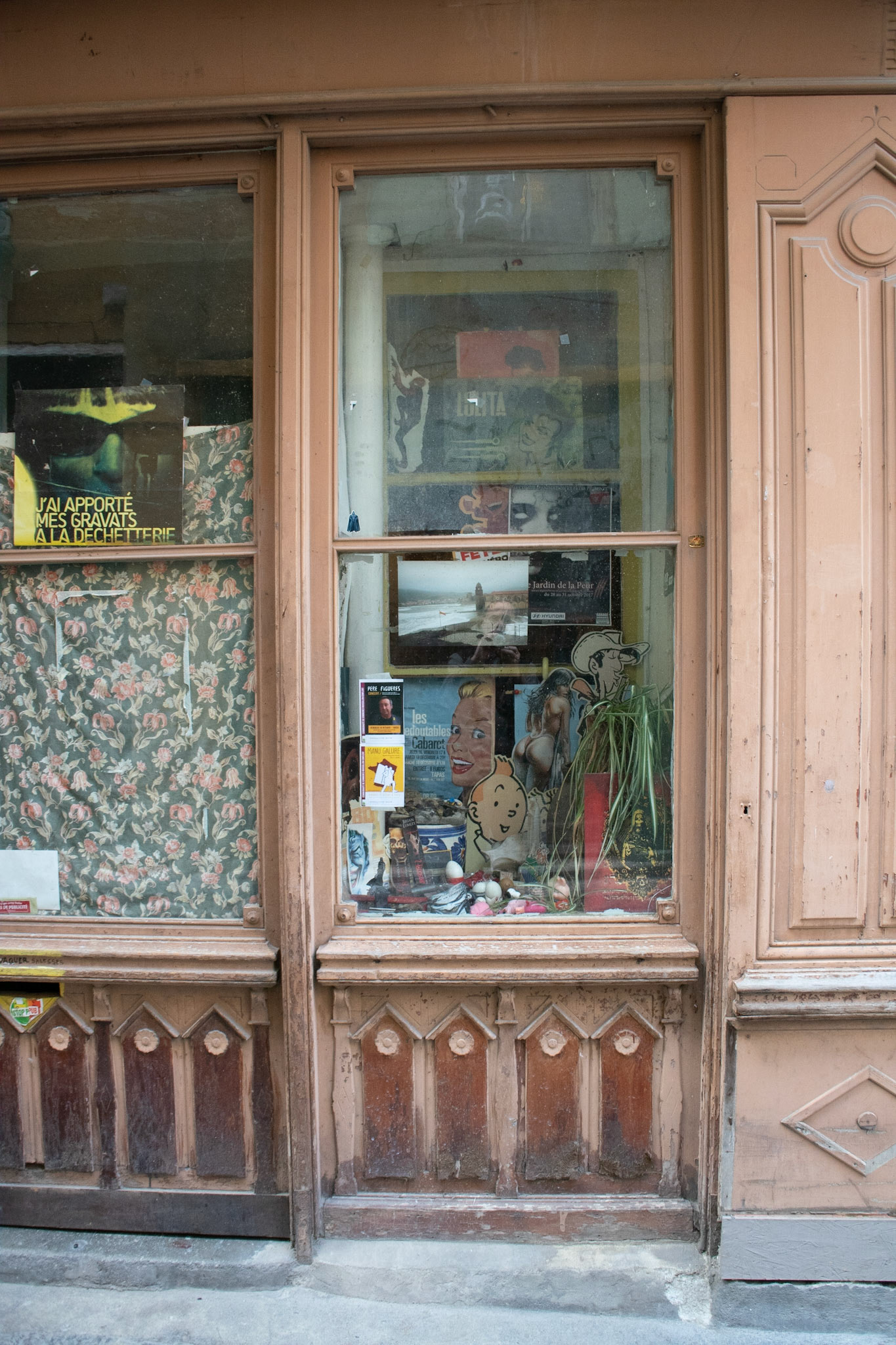
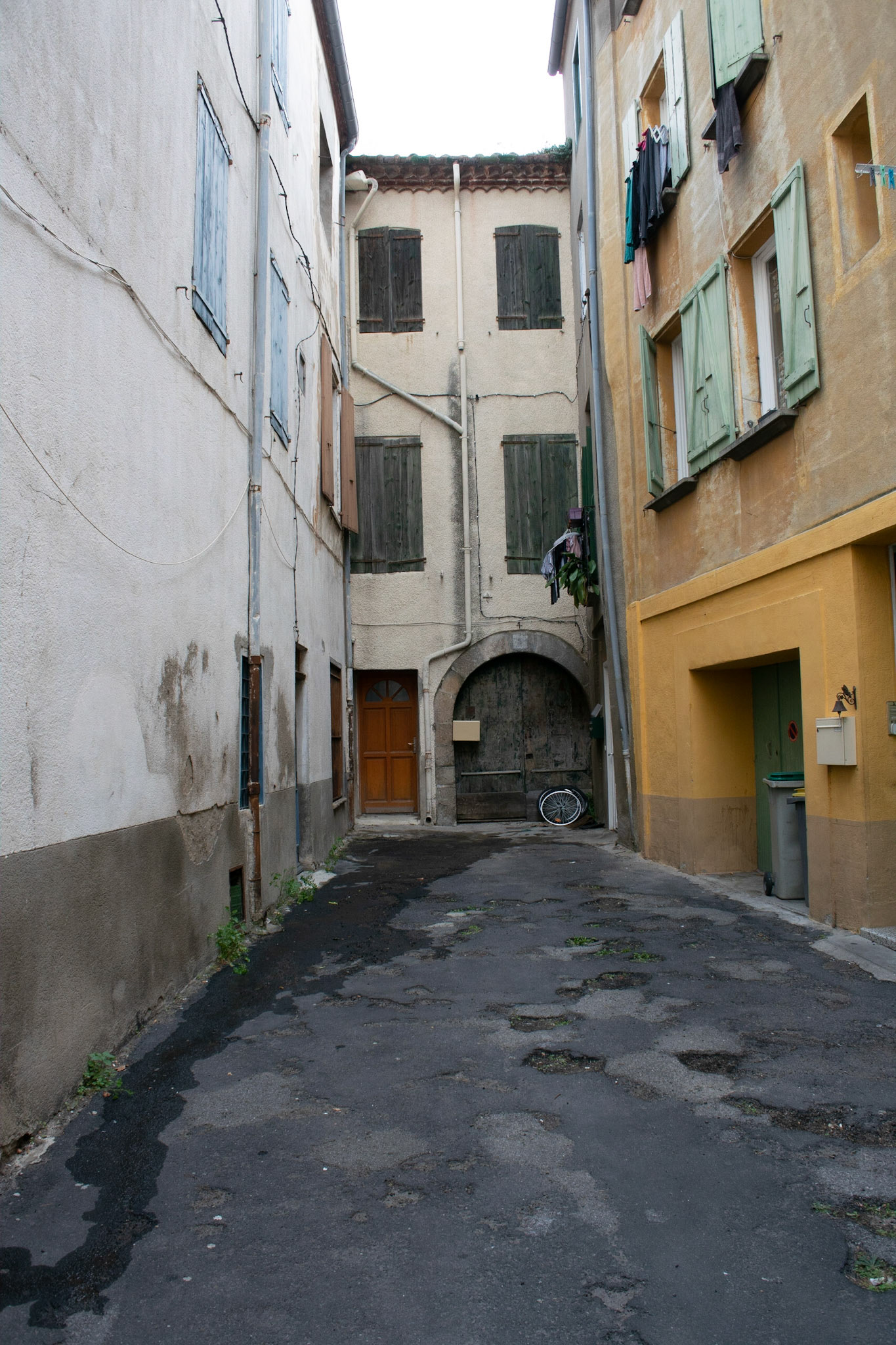
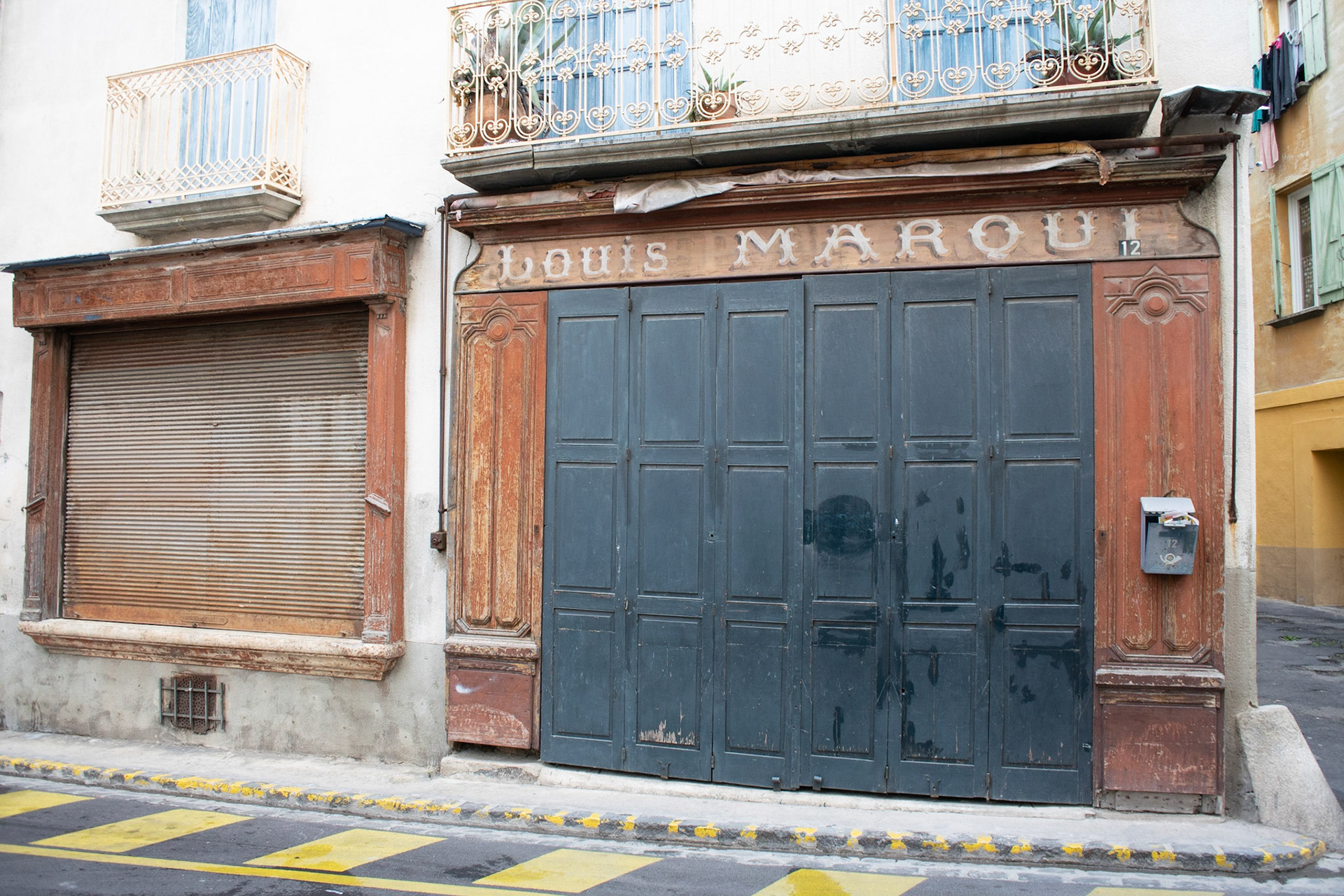
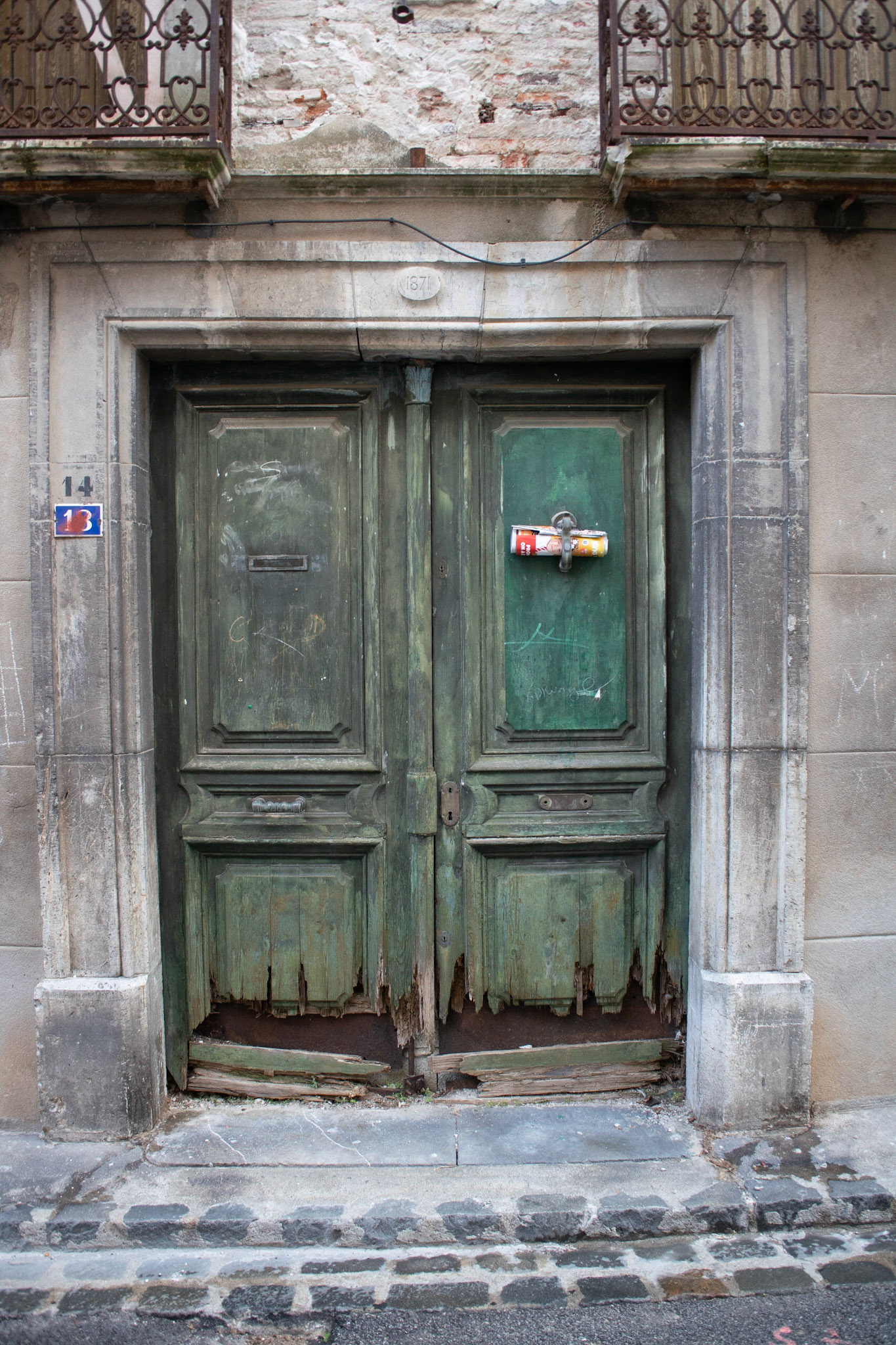
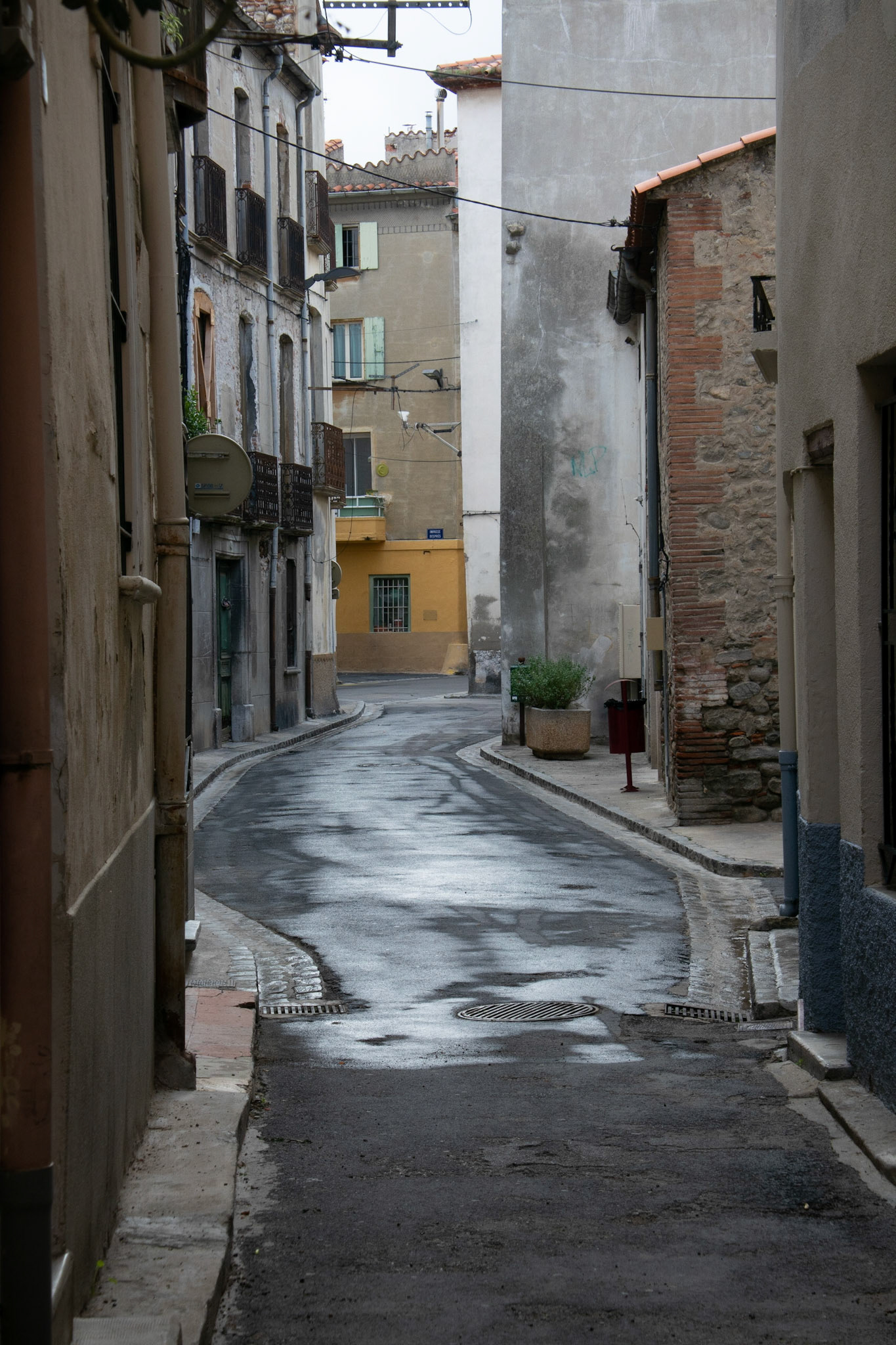
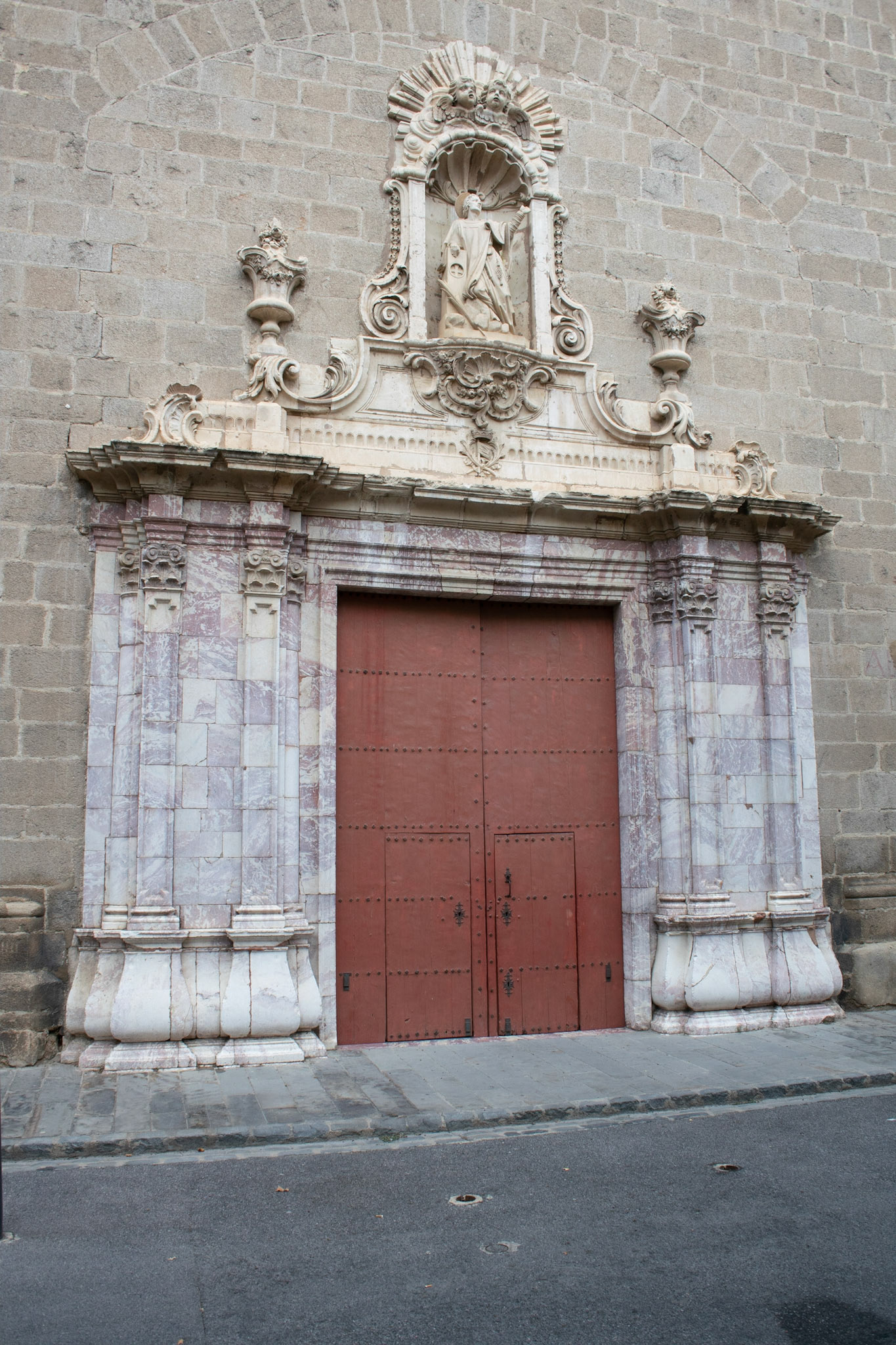
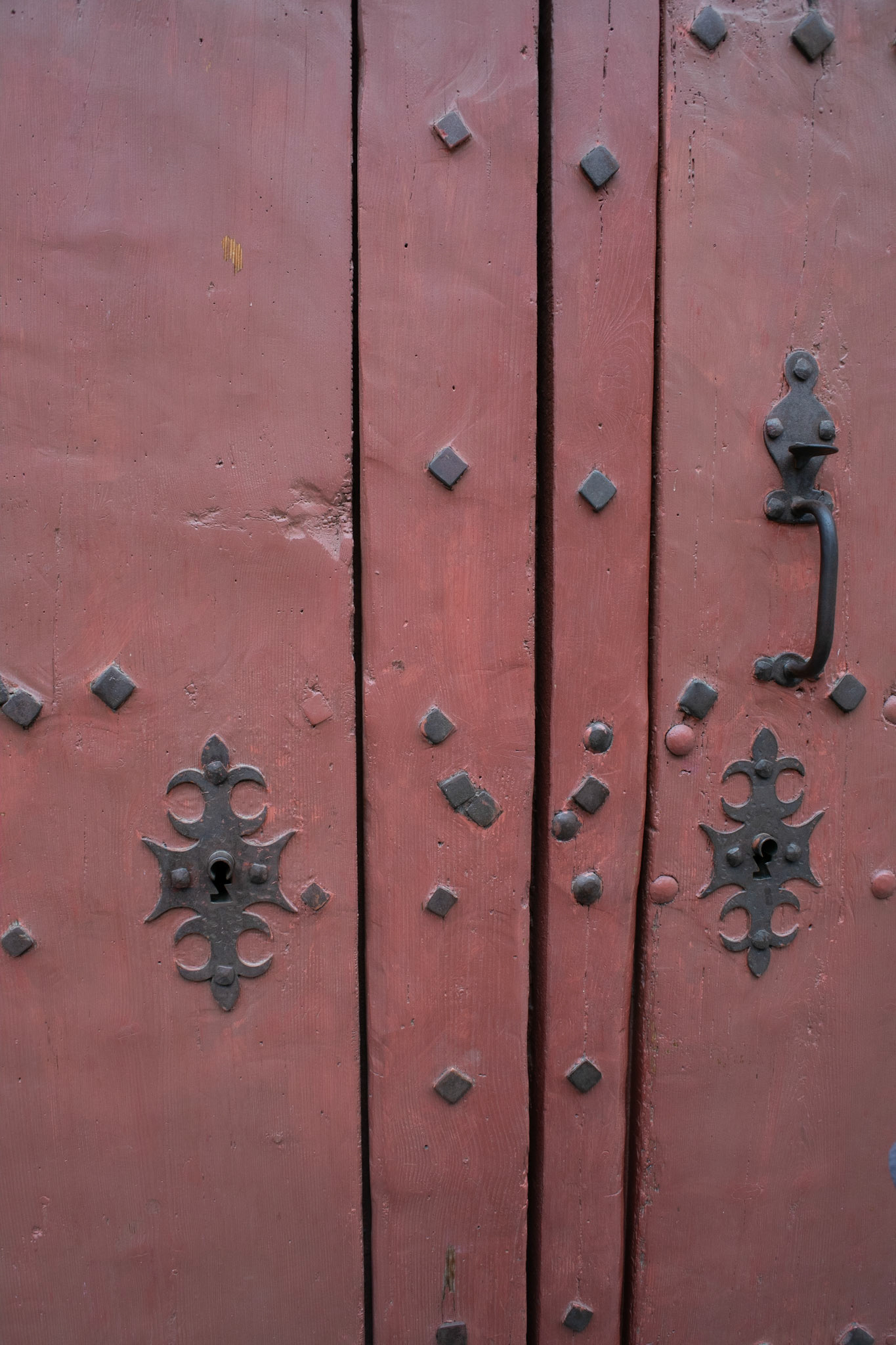
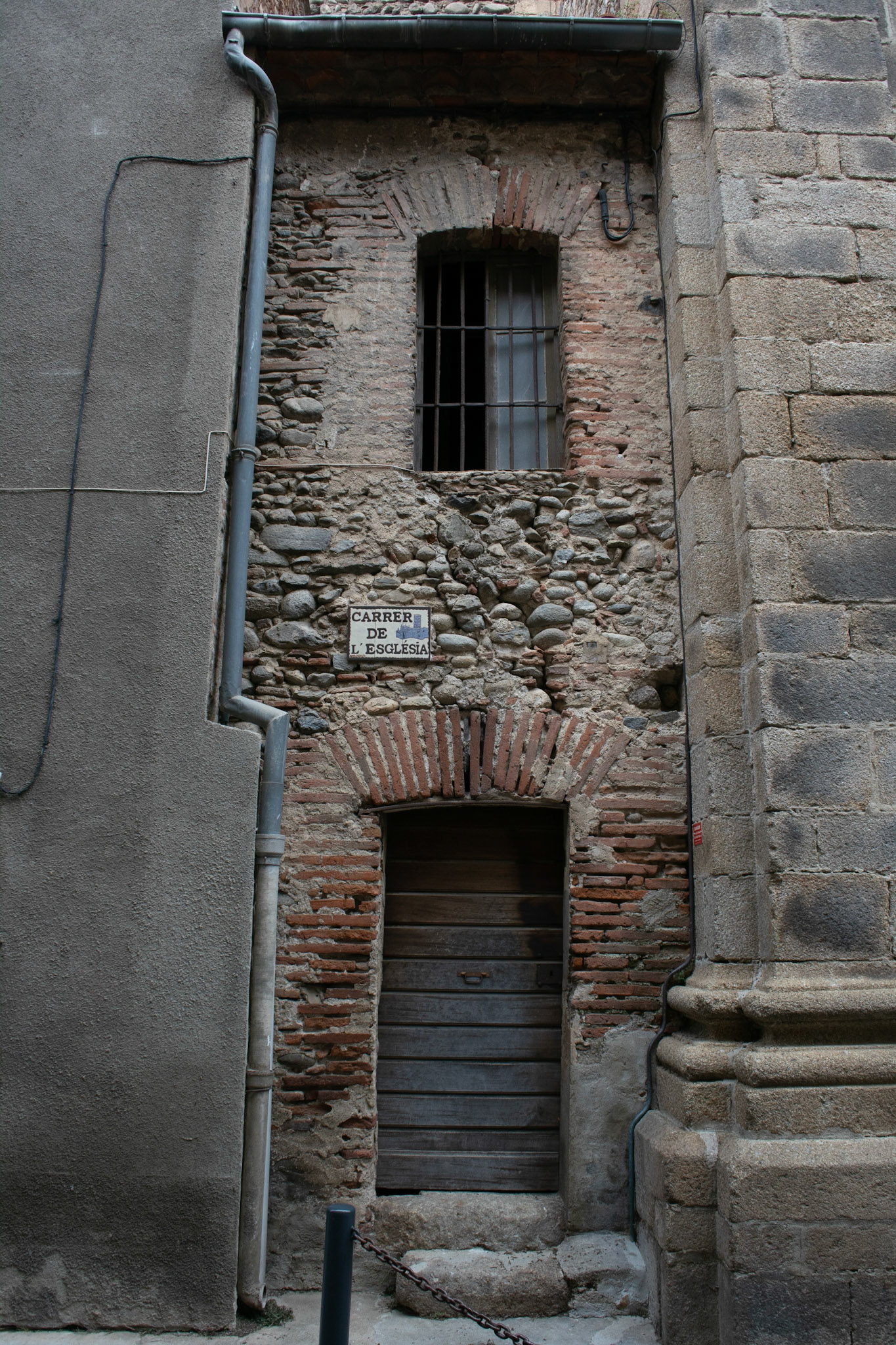
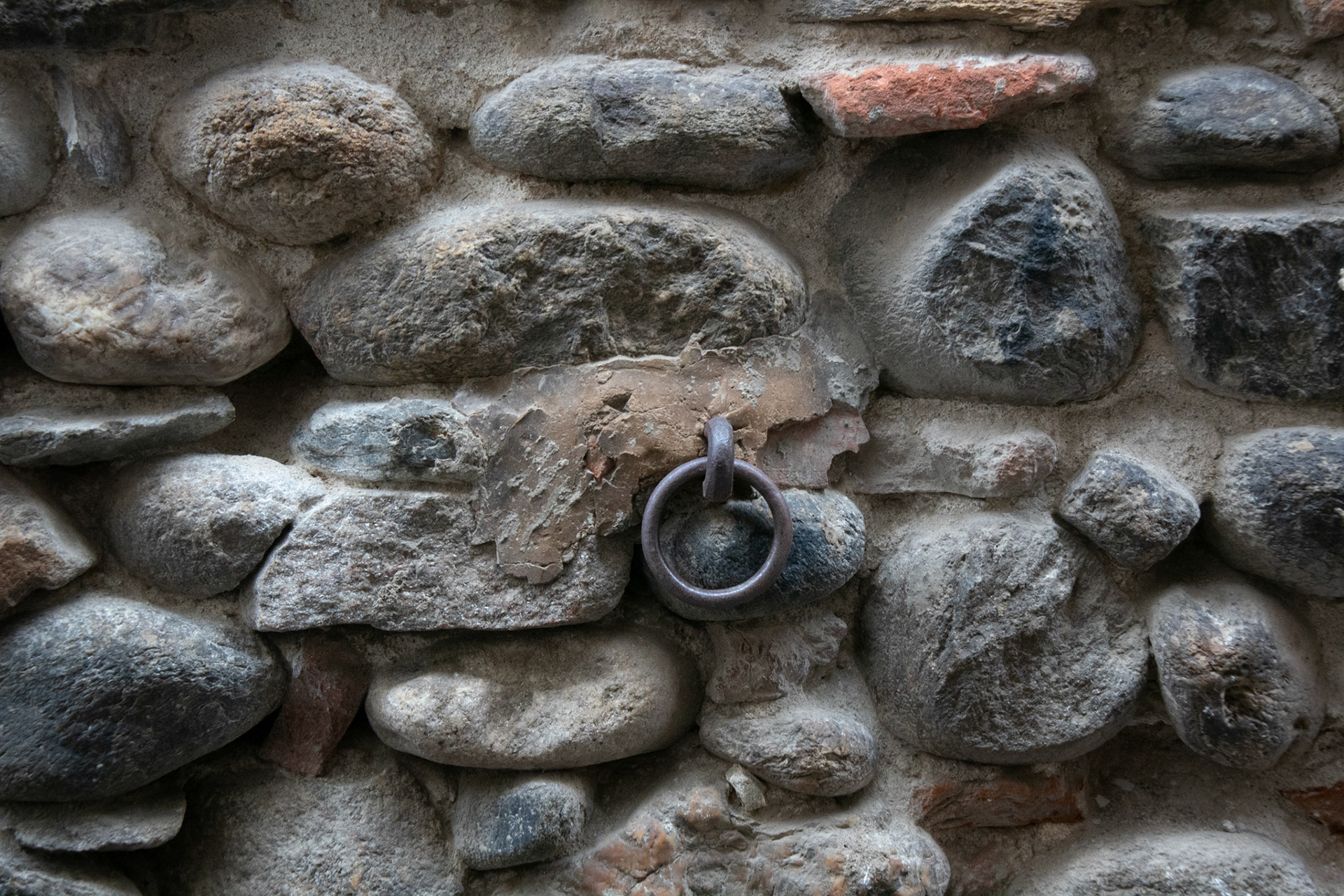
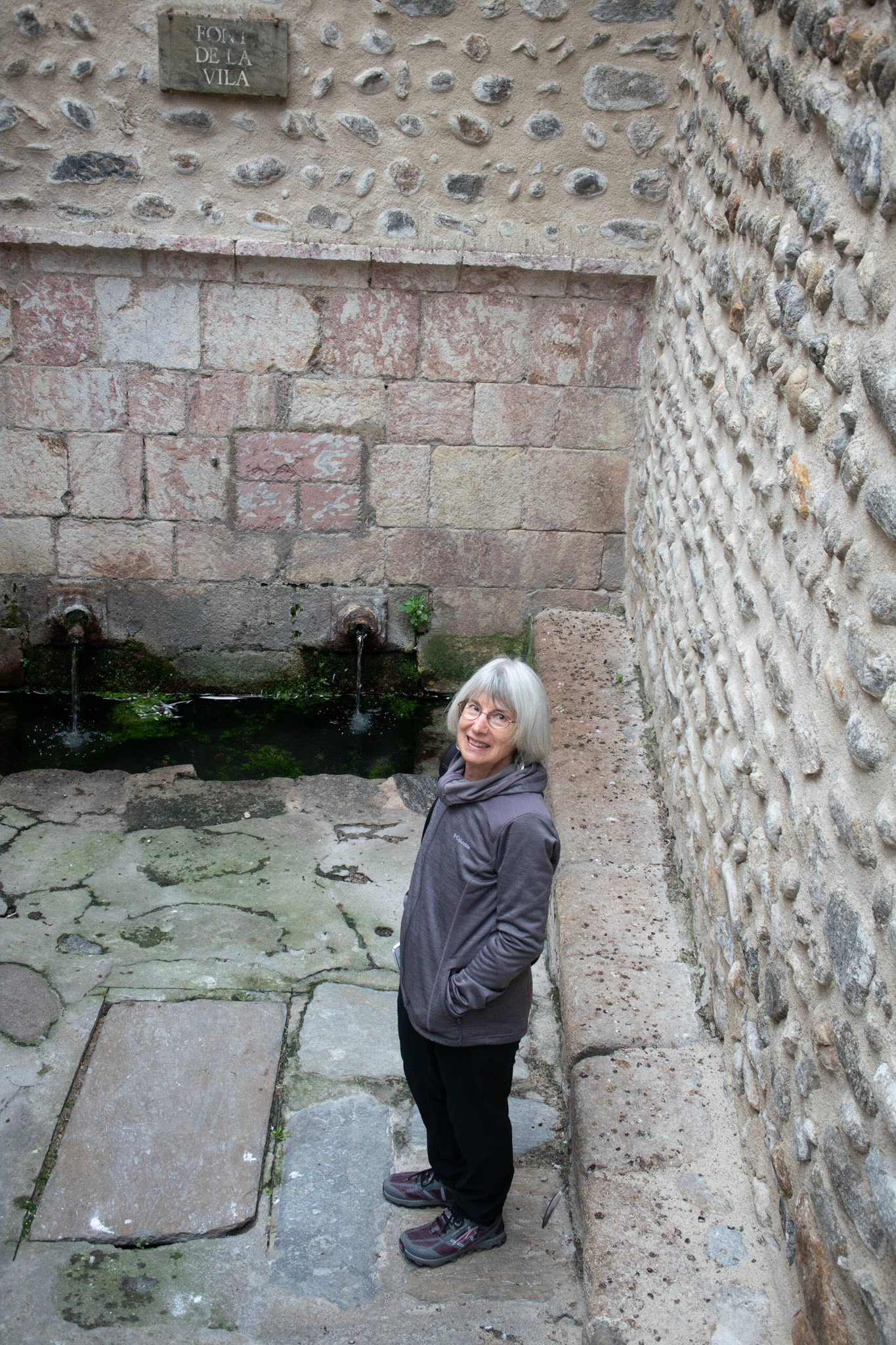
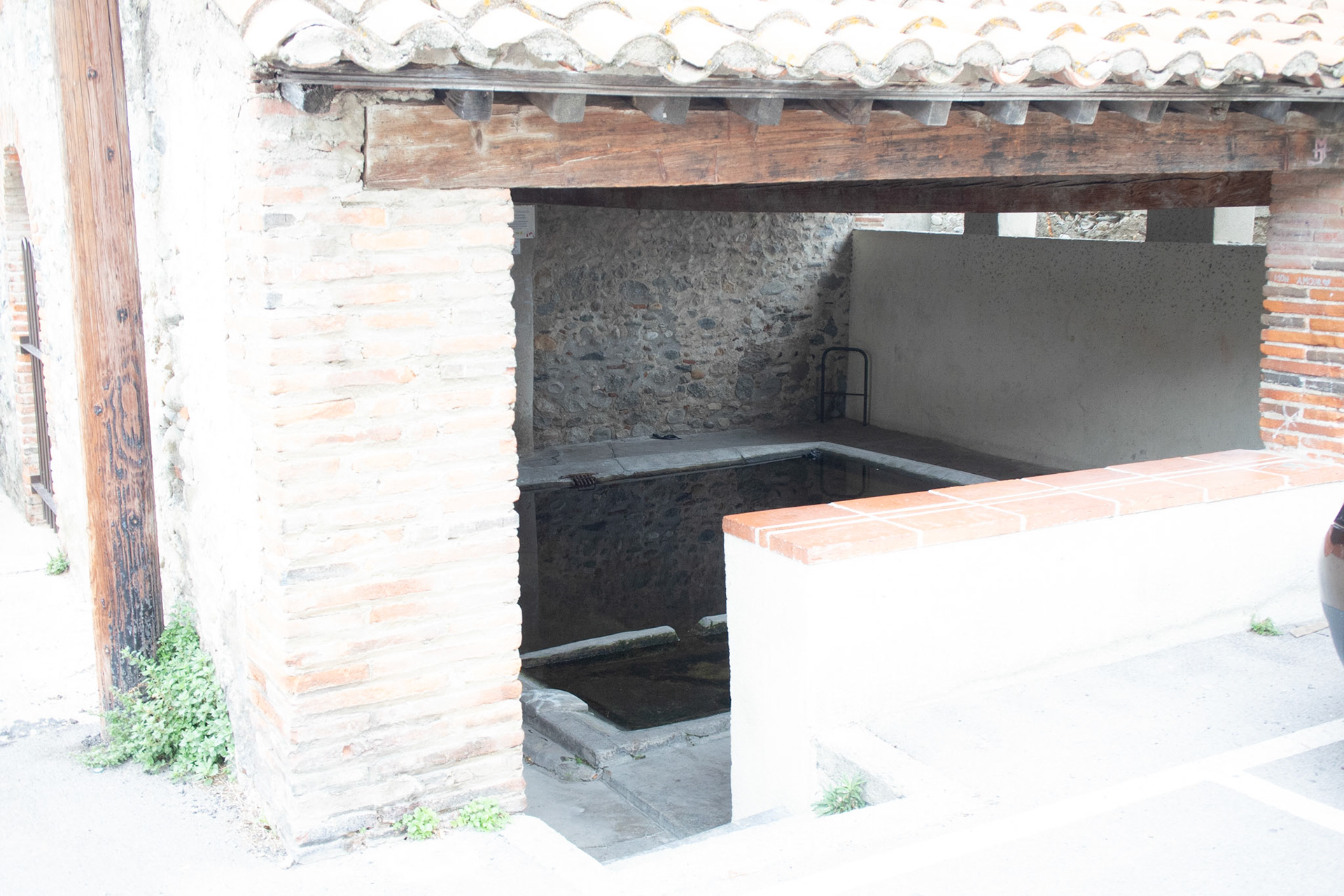
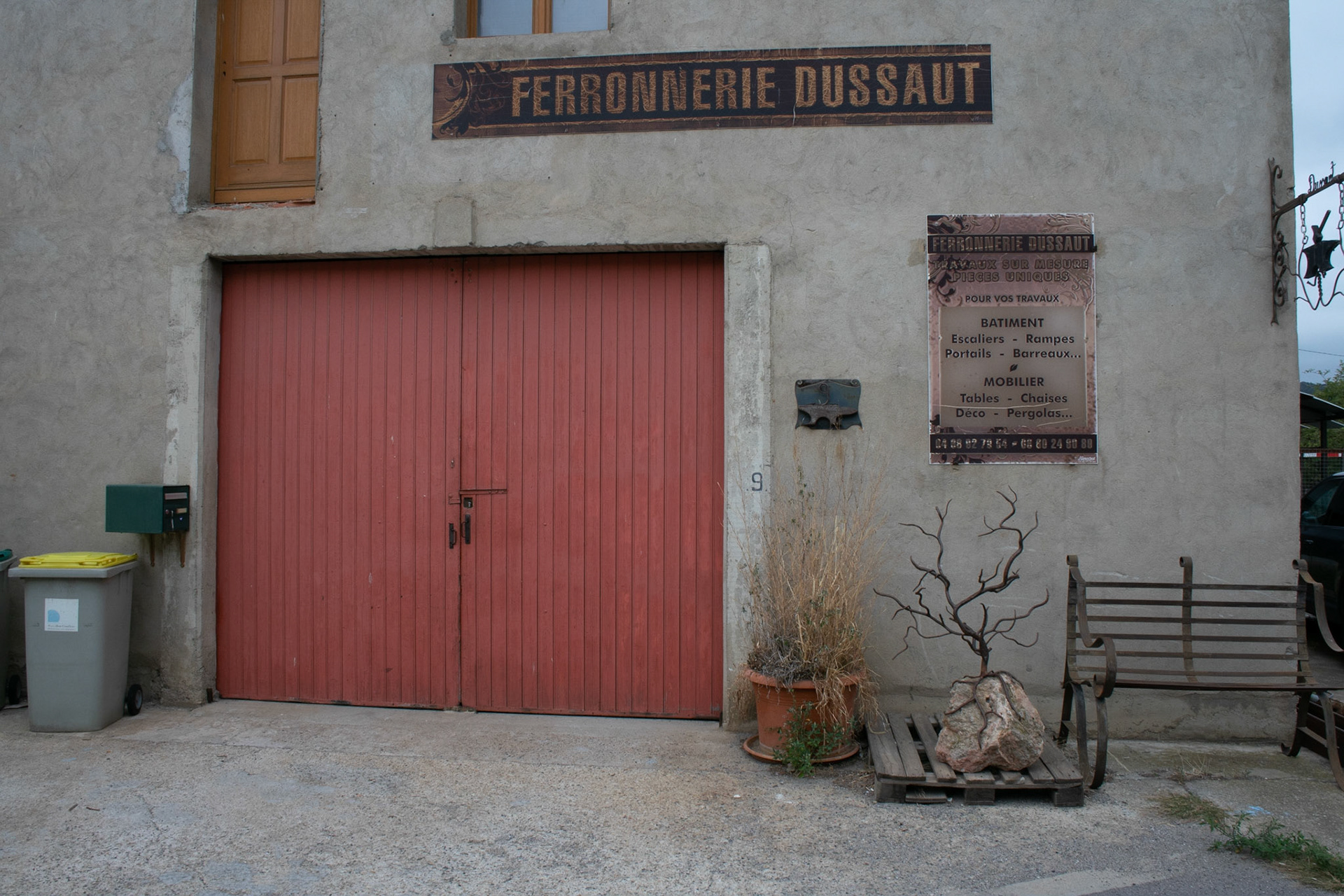
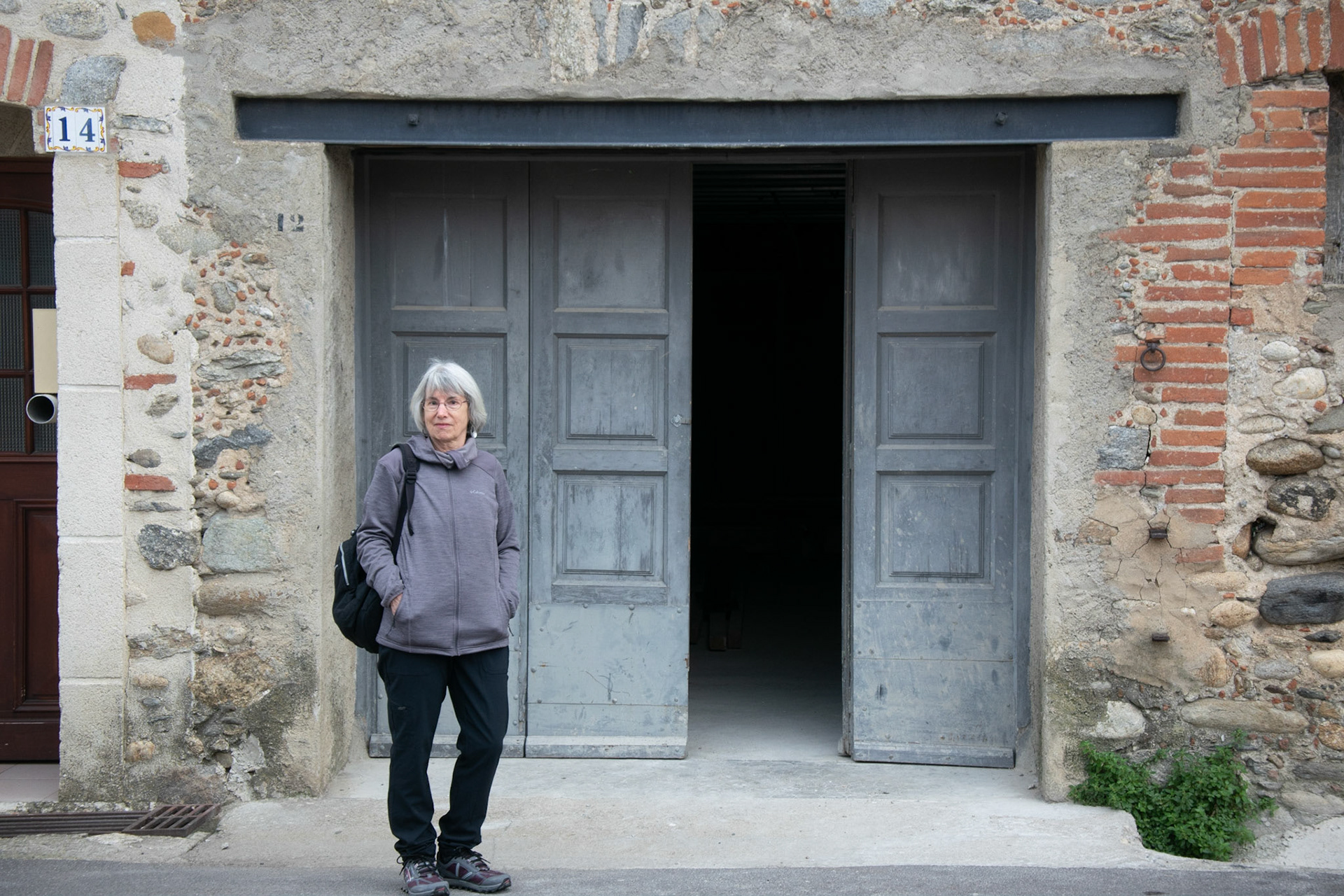
Just outside of the city wall, we could see the Tet and the steep hills on the other side that harbored Les Orgues d'Ille-sur-Tet—the hoodoos we wanted to see. The tourism office was on the mark with this being a 40 minute walk from town. Mostly the walk was interesting, though we were exposed to lots of flying autos on roads with no shoulder. Someday we may not be nimble enough to dodge traffic. Probably, I ought to be overjoyed that the almosts didn't happen.
This otherwise accessible park of geological wonders is a gem. If you're from the US, you may have seen hoodoos in Bryce Canyon. They exist in relatively small sets around the world. Along with the mesmerizing, eroded formations, there are stunning views of the nearby mountains, plus a display—strung along the trail—of interesting metal sculptures made of discarded industrial bits in humorous juxtaposition to the spectacular geologic erosion you'll soon be awed by—or were just awed by, on your way down. After our 40 minutes from Ille-sur-Tet to the park office, we confirmed what we'd guess: that we’d taken the wrong walking route; there was a much easier, shorter, and safer way. But that was on us. Once we were there, we were enthralled by the whole experience.
Also, once we'd gotten off the thoroughfare and on to the road to the park info center we were happy to walk by homes, farms, and small businesses that are like anywhere and provide a look behind curtains. When we abandoned the highway, following the signs to the park, we'd probably gone only half a mile when we came to a specialty honeys shop. This was their tasting room for about three dozen botanically distinct and generally distinct in flavor. I didn't try them all. Neither of us did, but we bought small, easily arried jars of the most sweet and floral and the most molasses-like and bitter after comparing several in each direction from the neutral honey. And they had cold water. We'd been walking quite a while. It had been interesting.
One of the draws to this area for Linny and me is, among many artists who lived along this coast, is the artist couple Charles Rennie Macintosh and Margaret Macdonald. They lived mostly in Port-Vendres but also in Sur-le-tete and they roamed the region widely with their painting. Along the coast, including in and on both sides of Port-Vendres, the coastal trails have monuments to Macintosh at the sites where he painted, often with a large empty frame and a place to stand to see what the artist saw. We had been appreciating those monuments on our local walks, but we shouldn't have been surprised to come upon one as we crossed the river and the hoodoo palisades suddenly loomed above us.
We bought our tickets and hiked the easy, interesting creekside trail to the park's timed entrance to the core of the park, where we waited only a few minutes for two people to leave. Our two hours had begun. Except that it would have been outstanding to picnic there and doze under a tree for the afternoon. It was beautiful. And it was a fair amount of time to appreciate the formations and enjoy a short lunch on an absolutely beautiful mid-October day. Every part was worth the modest entry fee, including the unusually well-equipped and clean toilets, the picnic sites, and the descriptive literature. Don’t miss it. As I said, it’s a gem.
